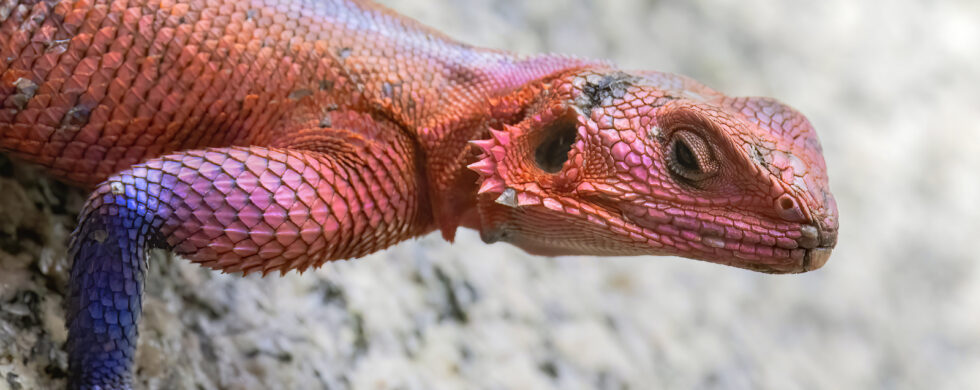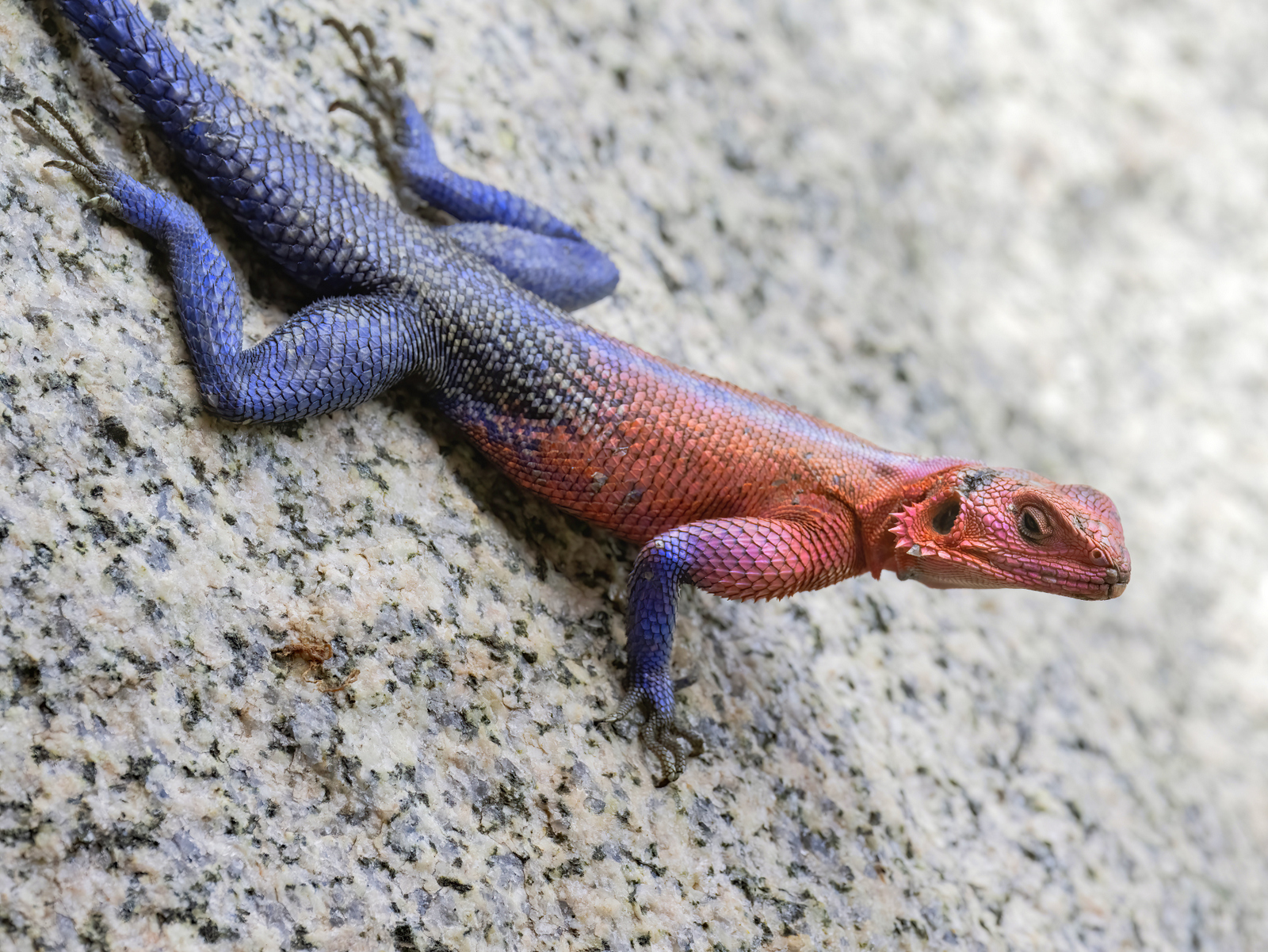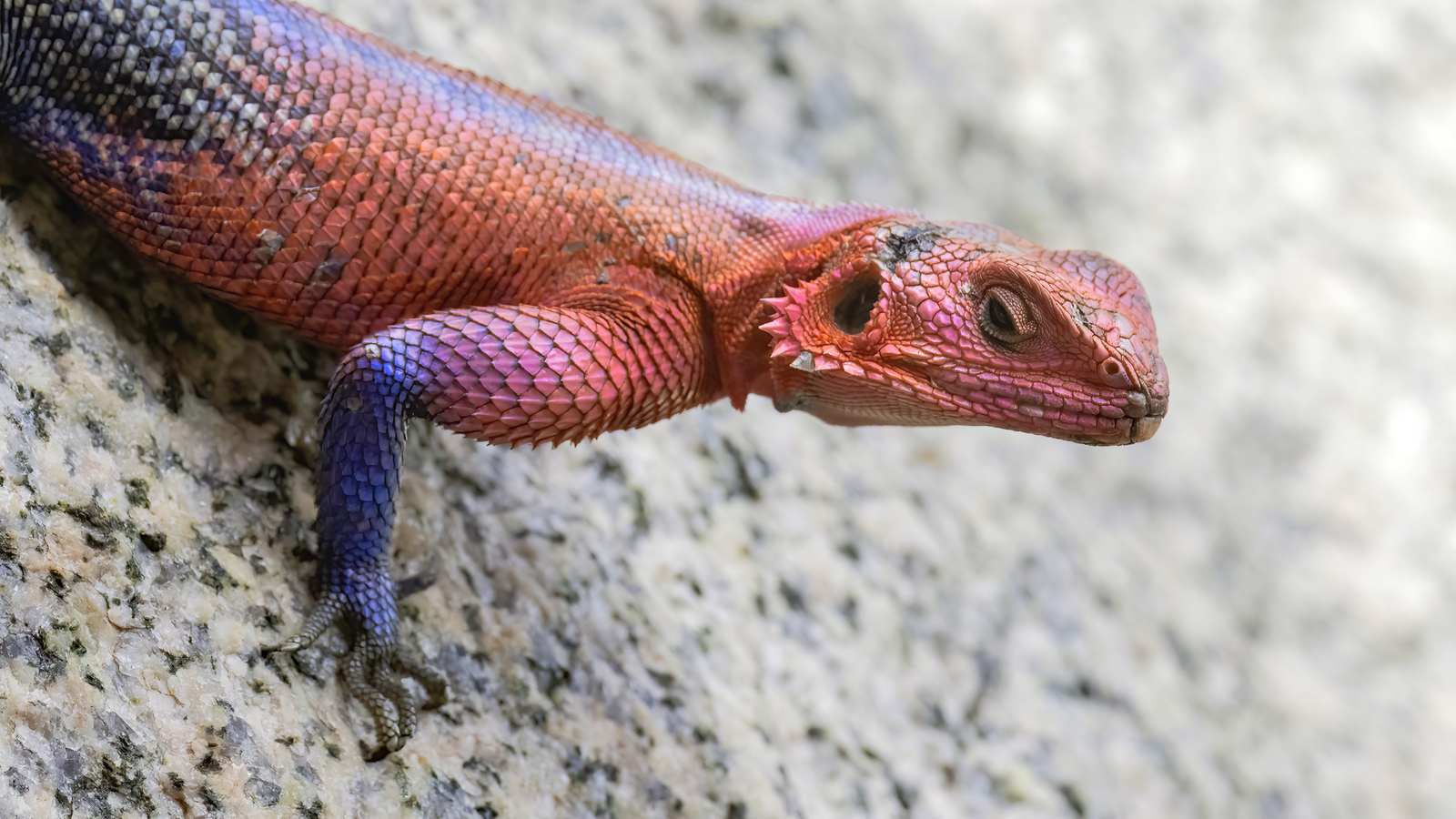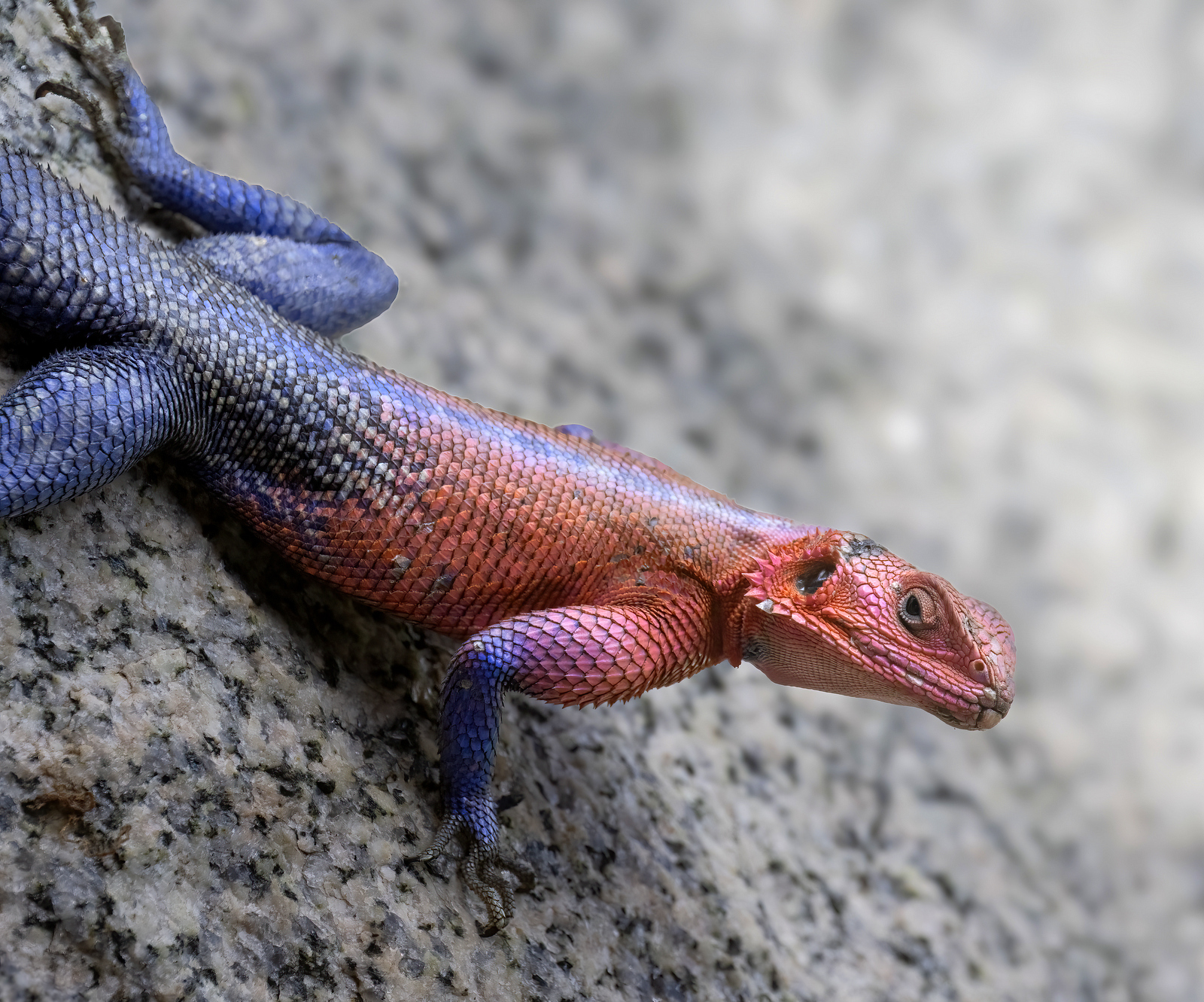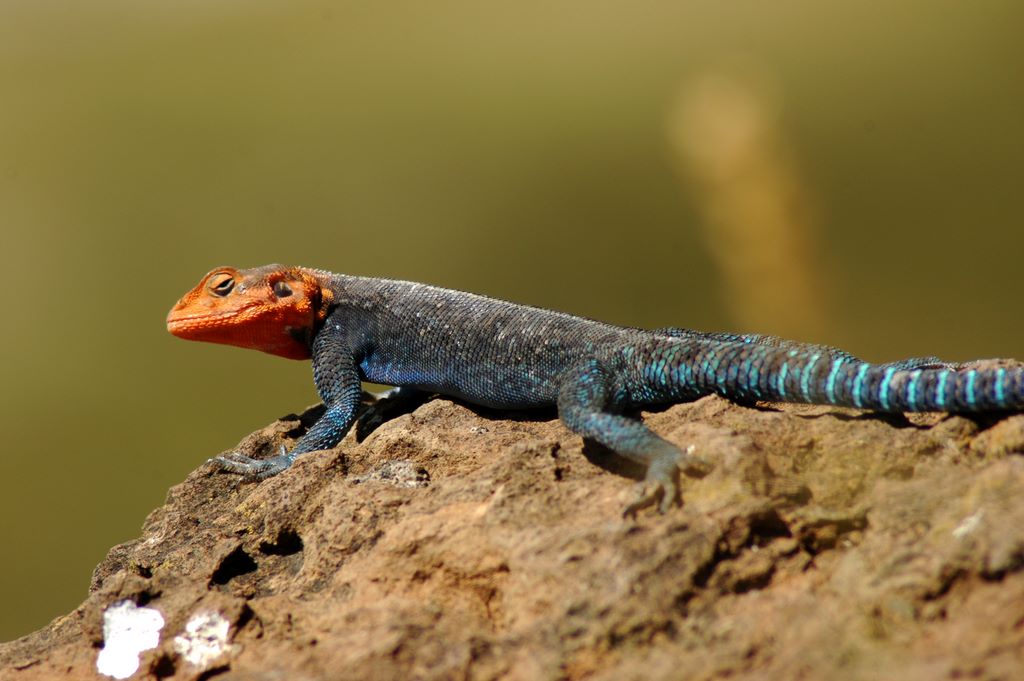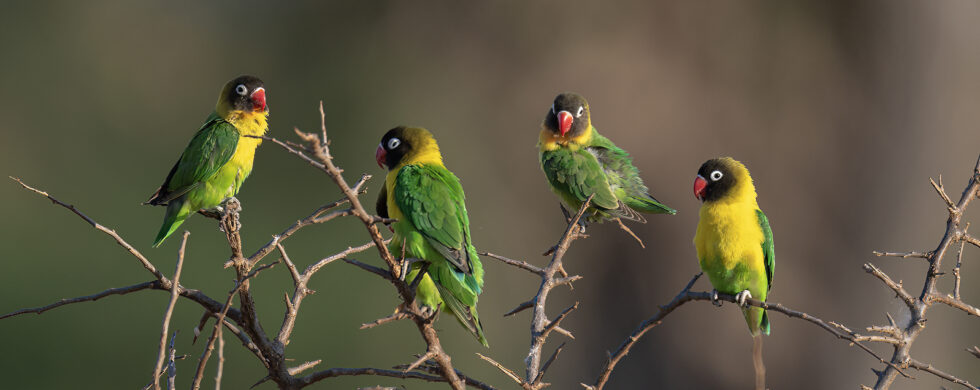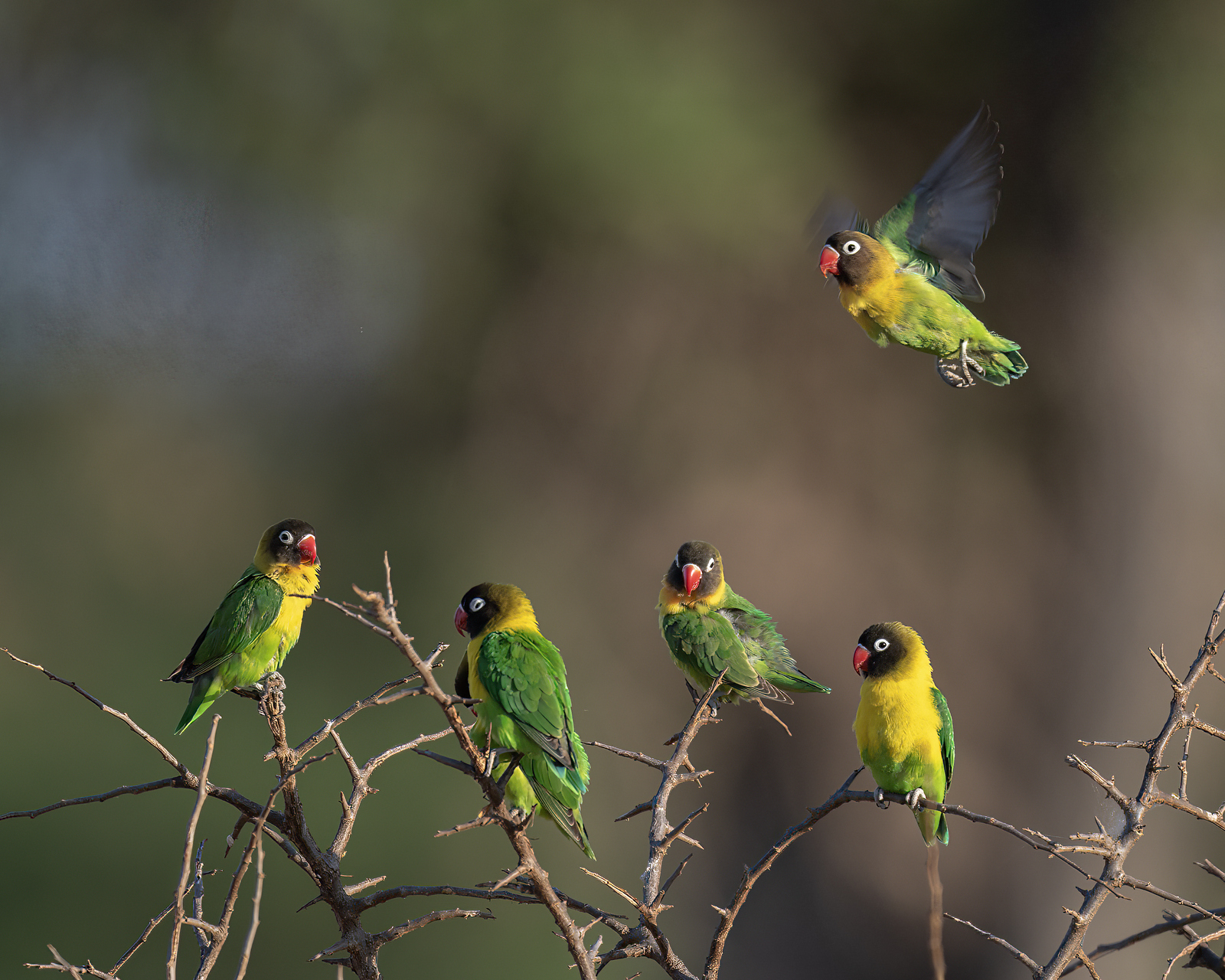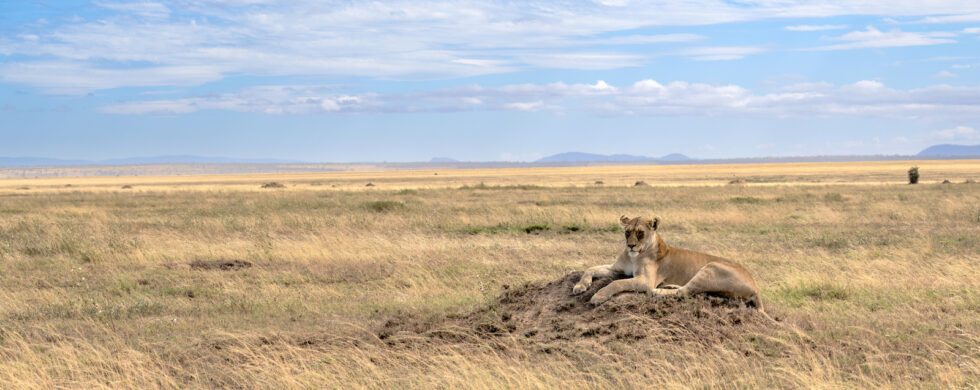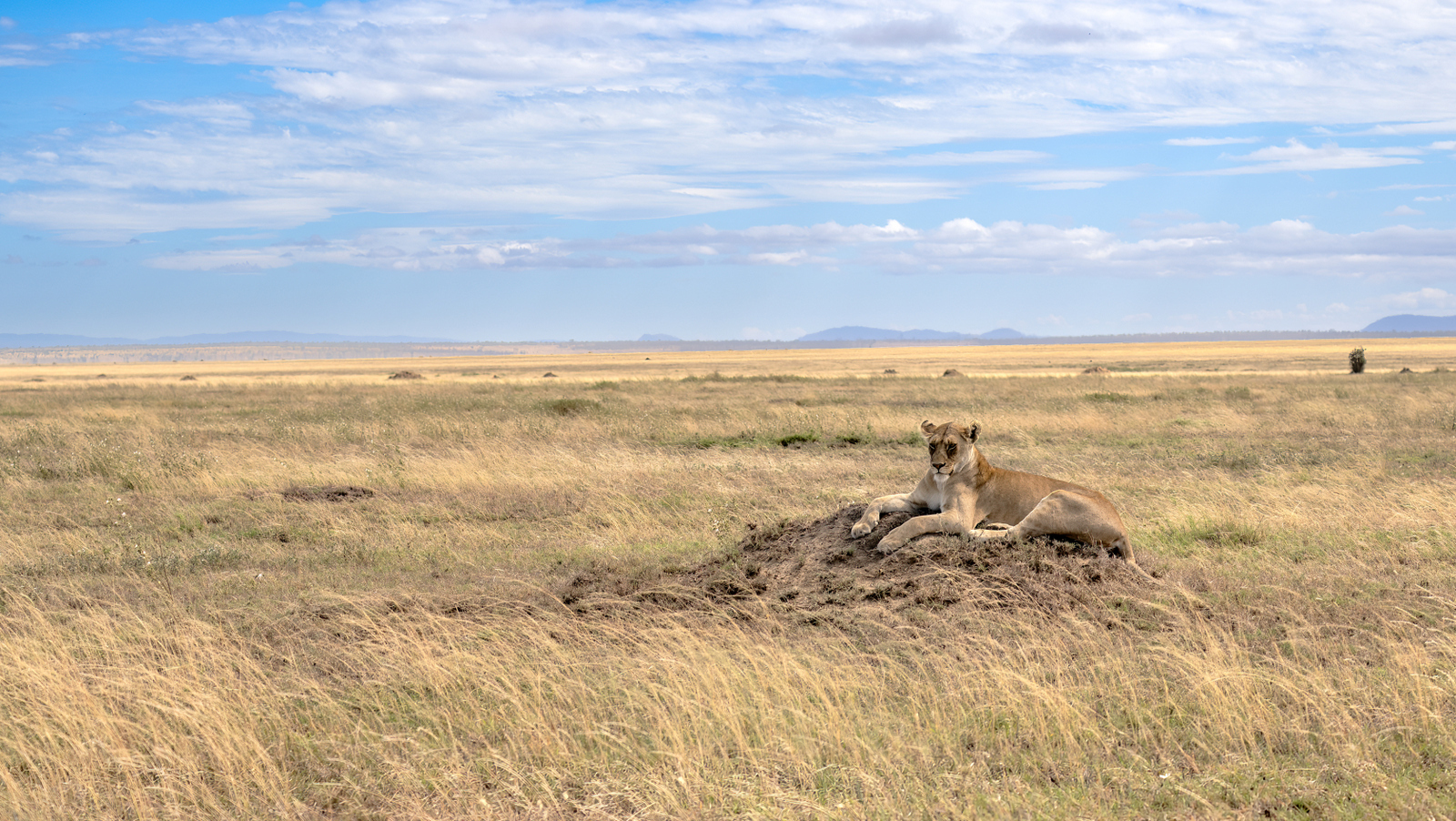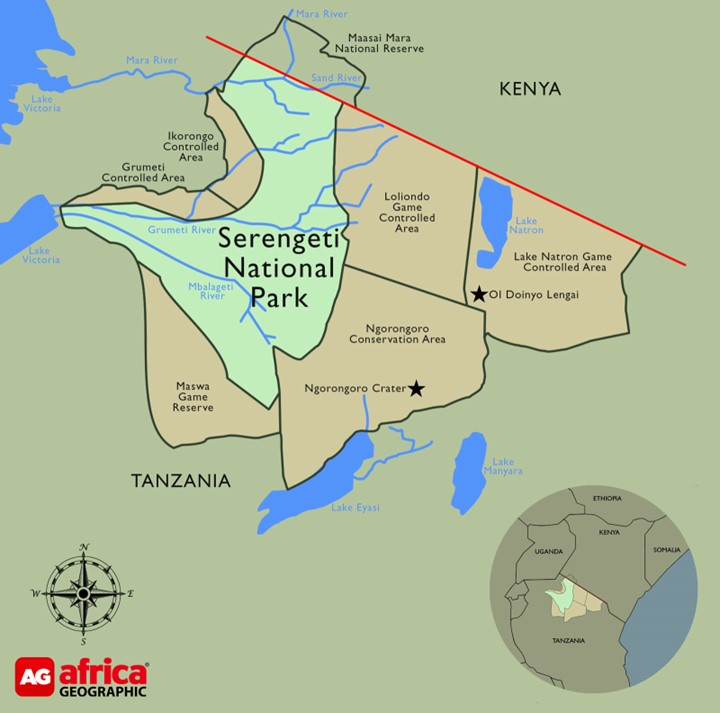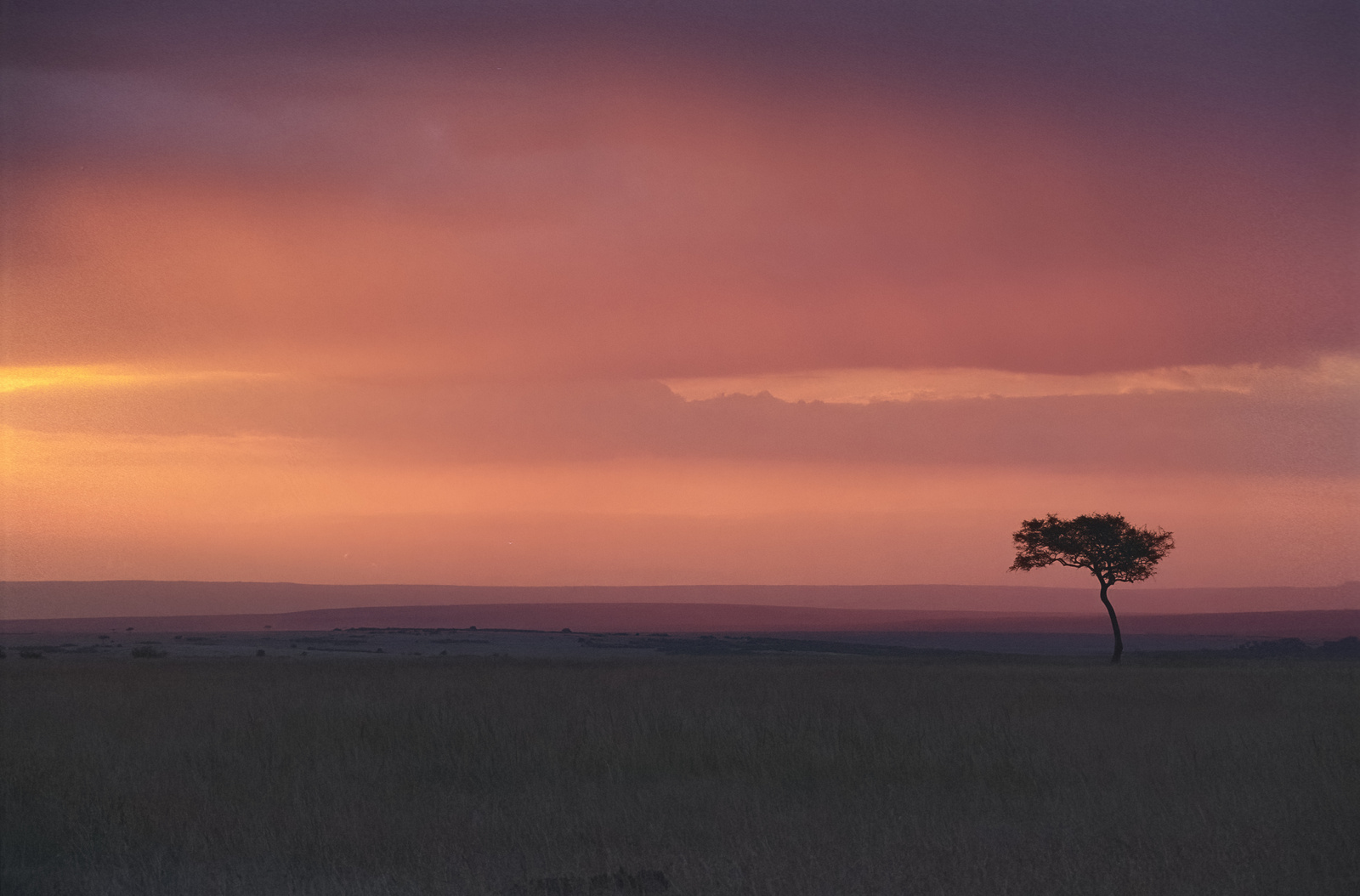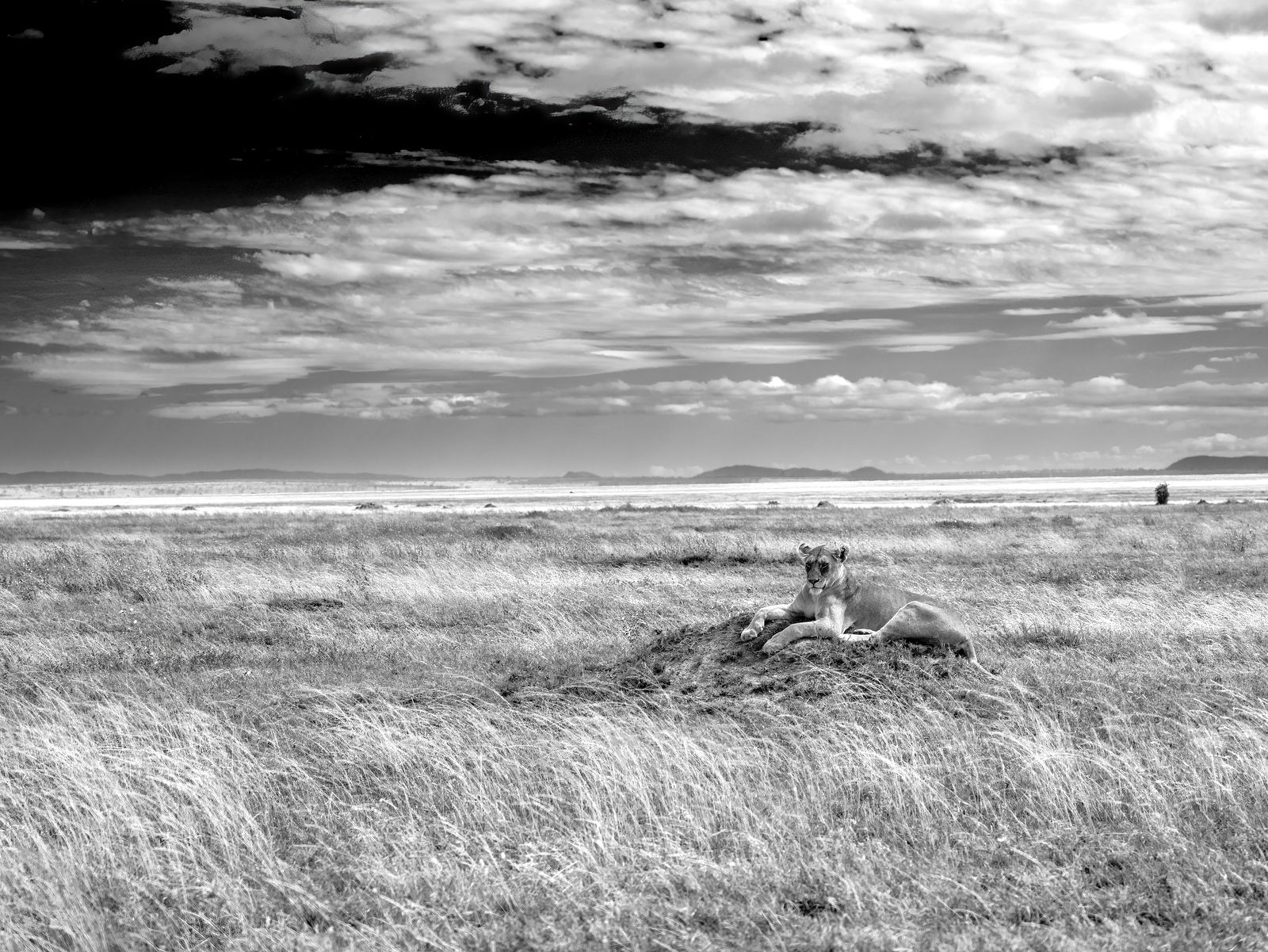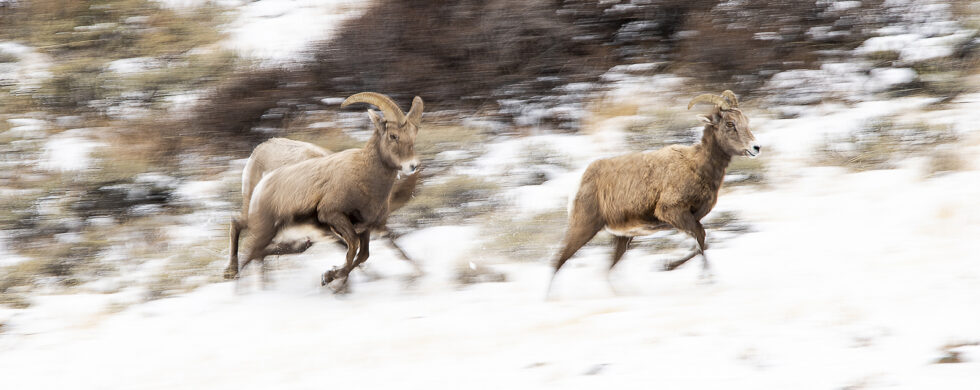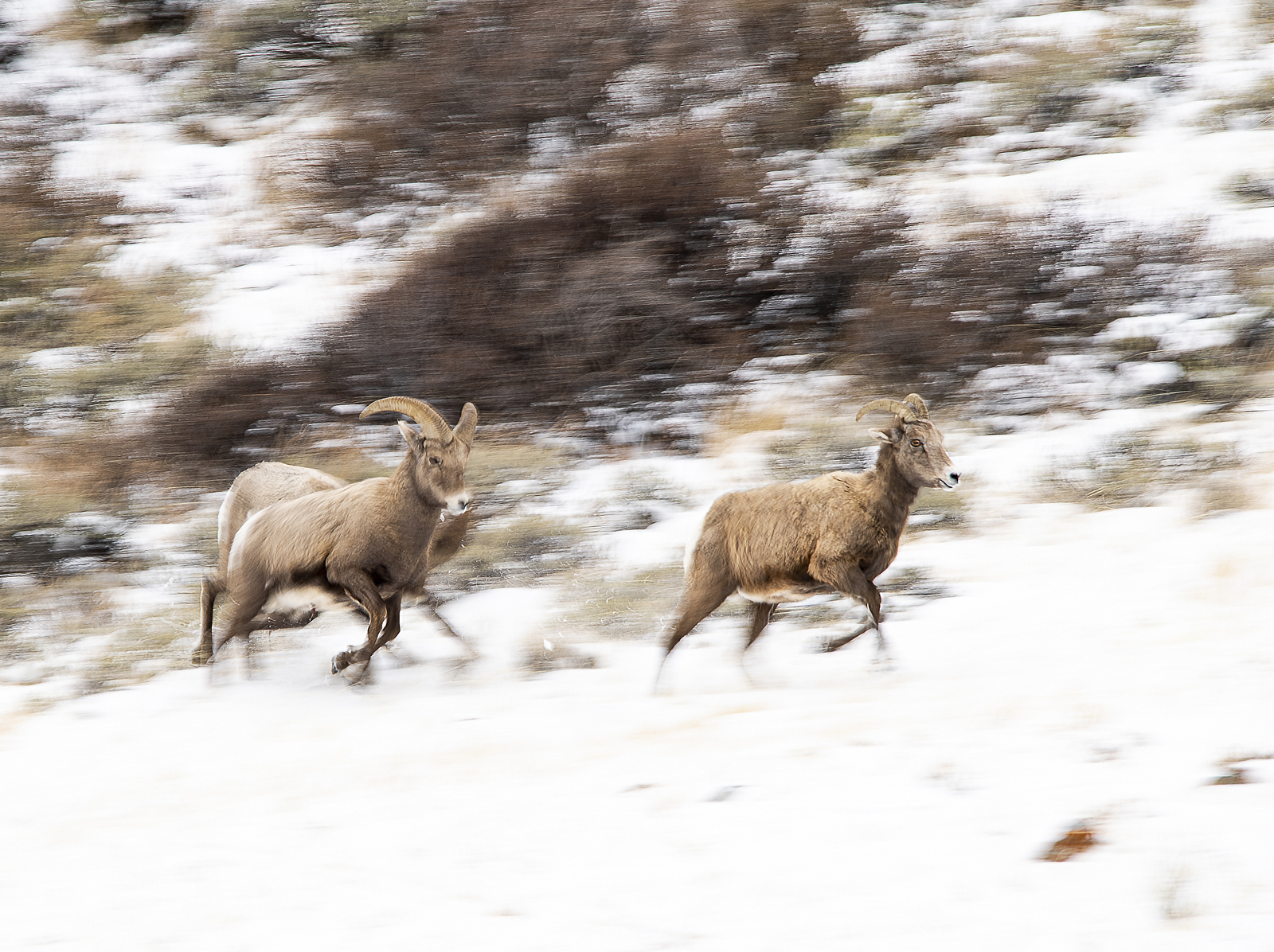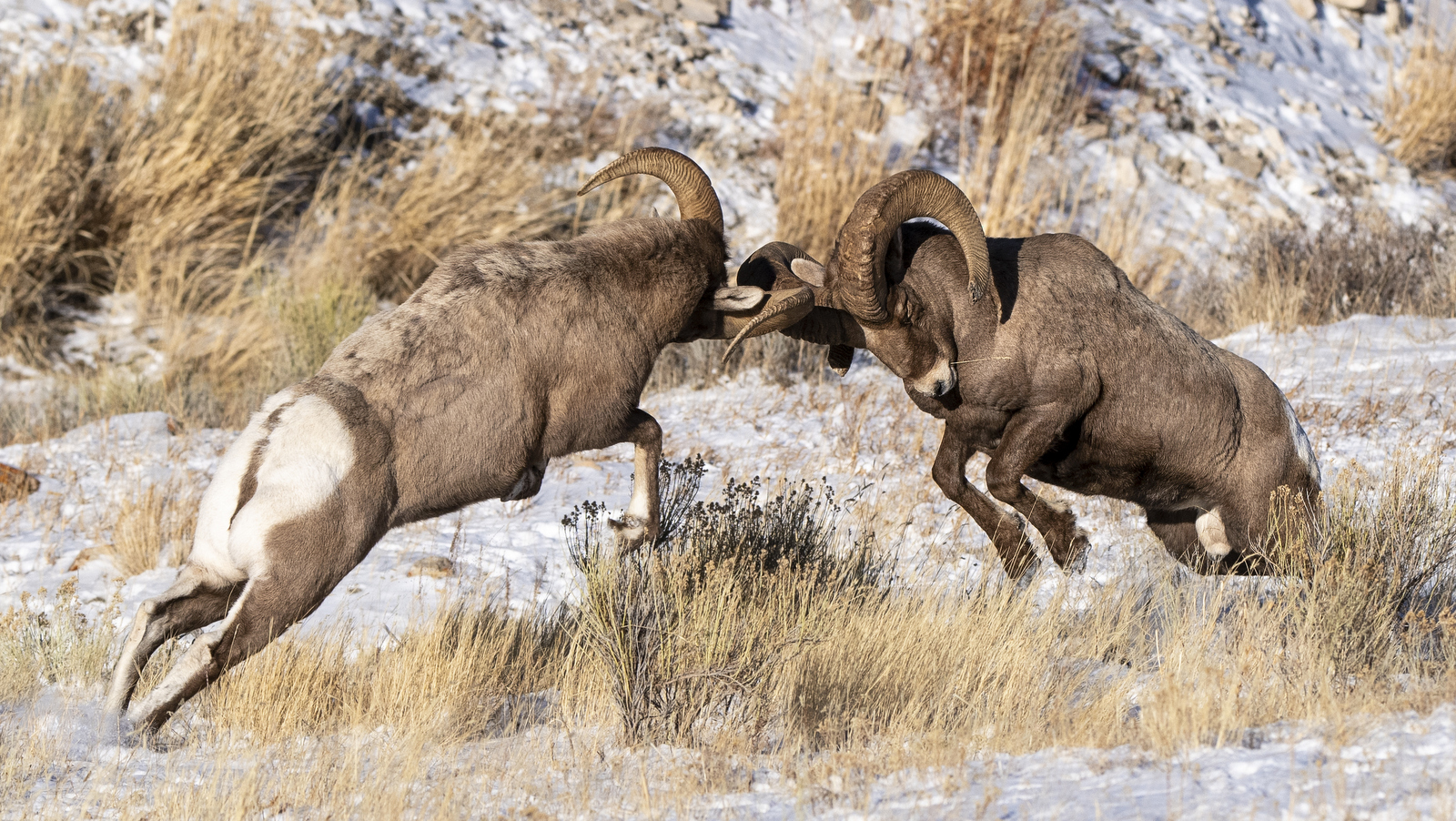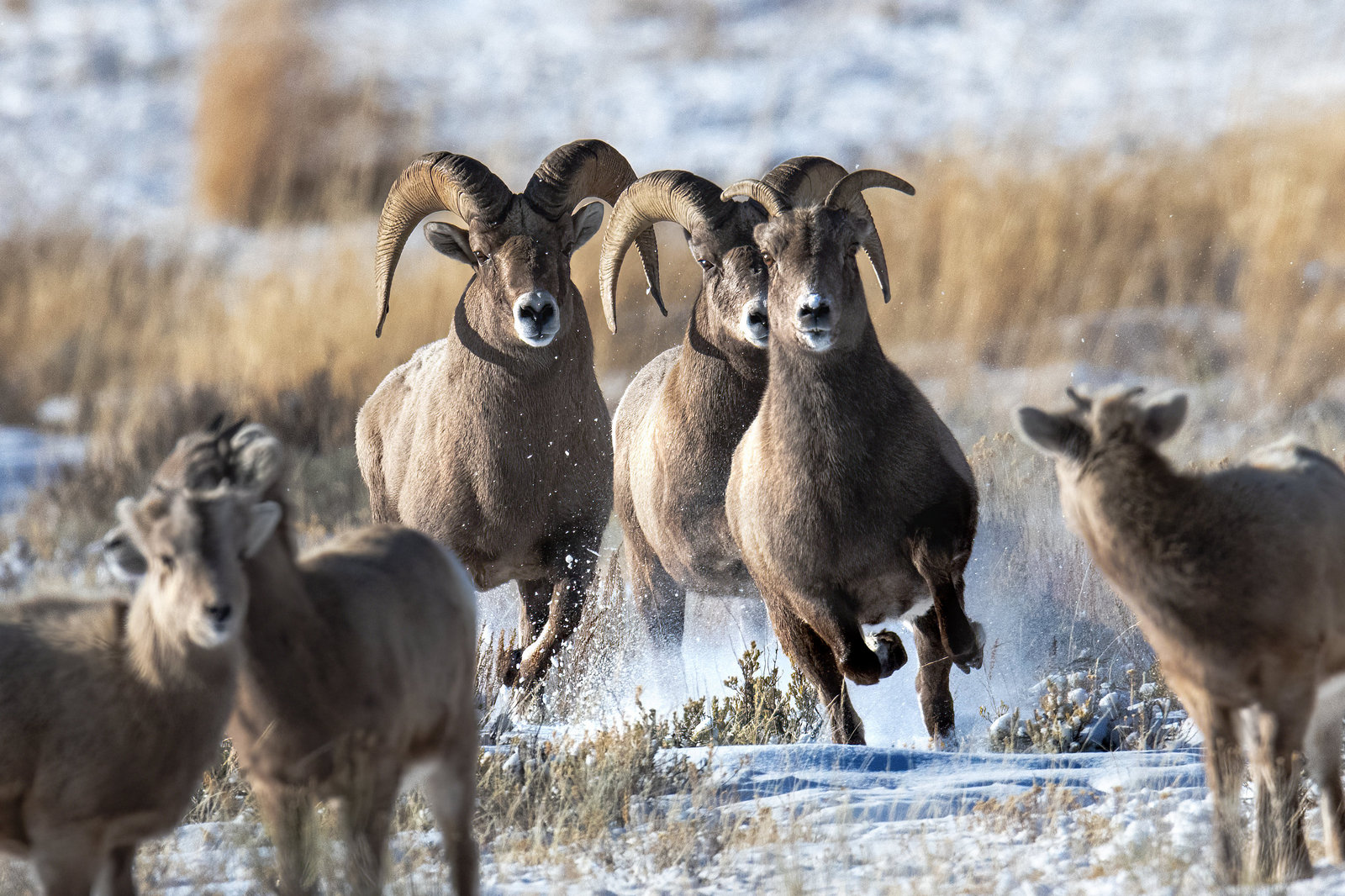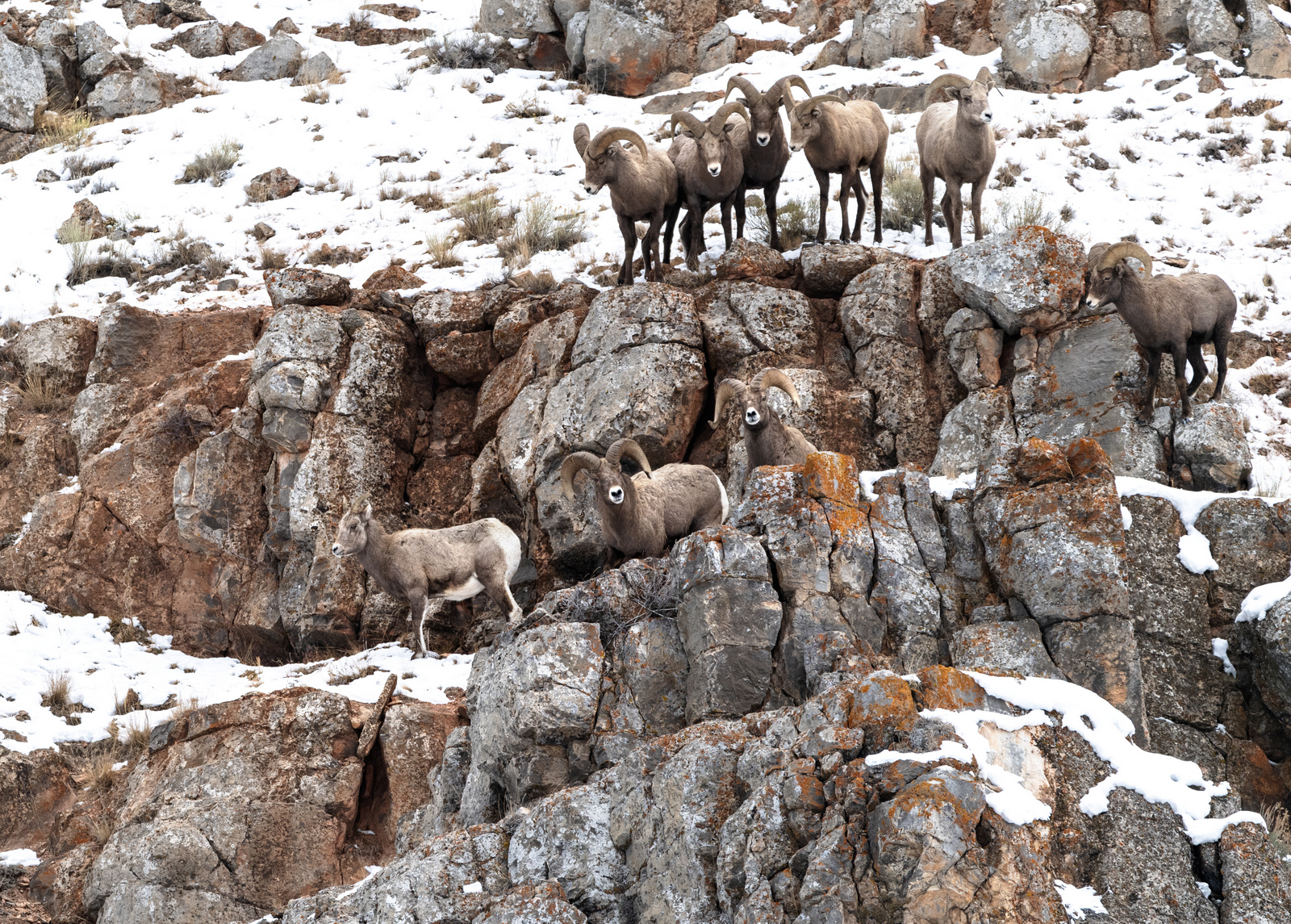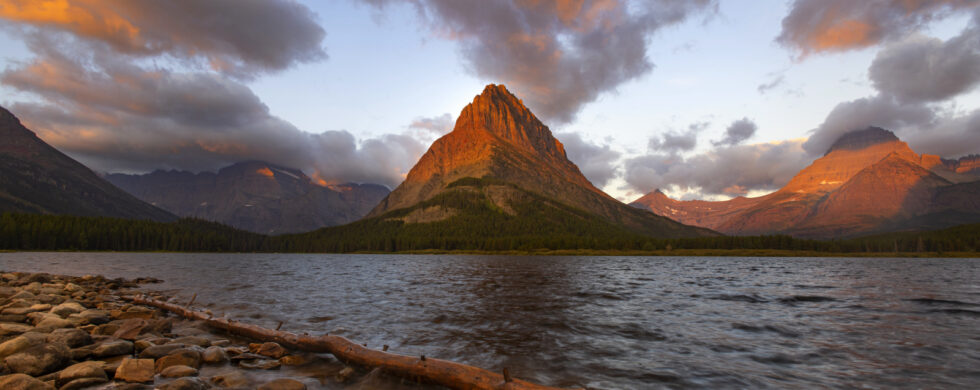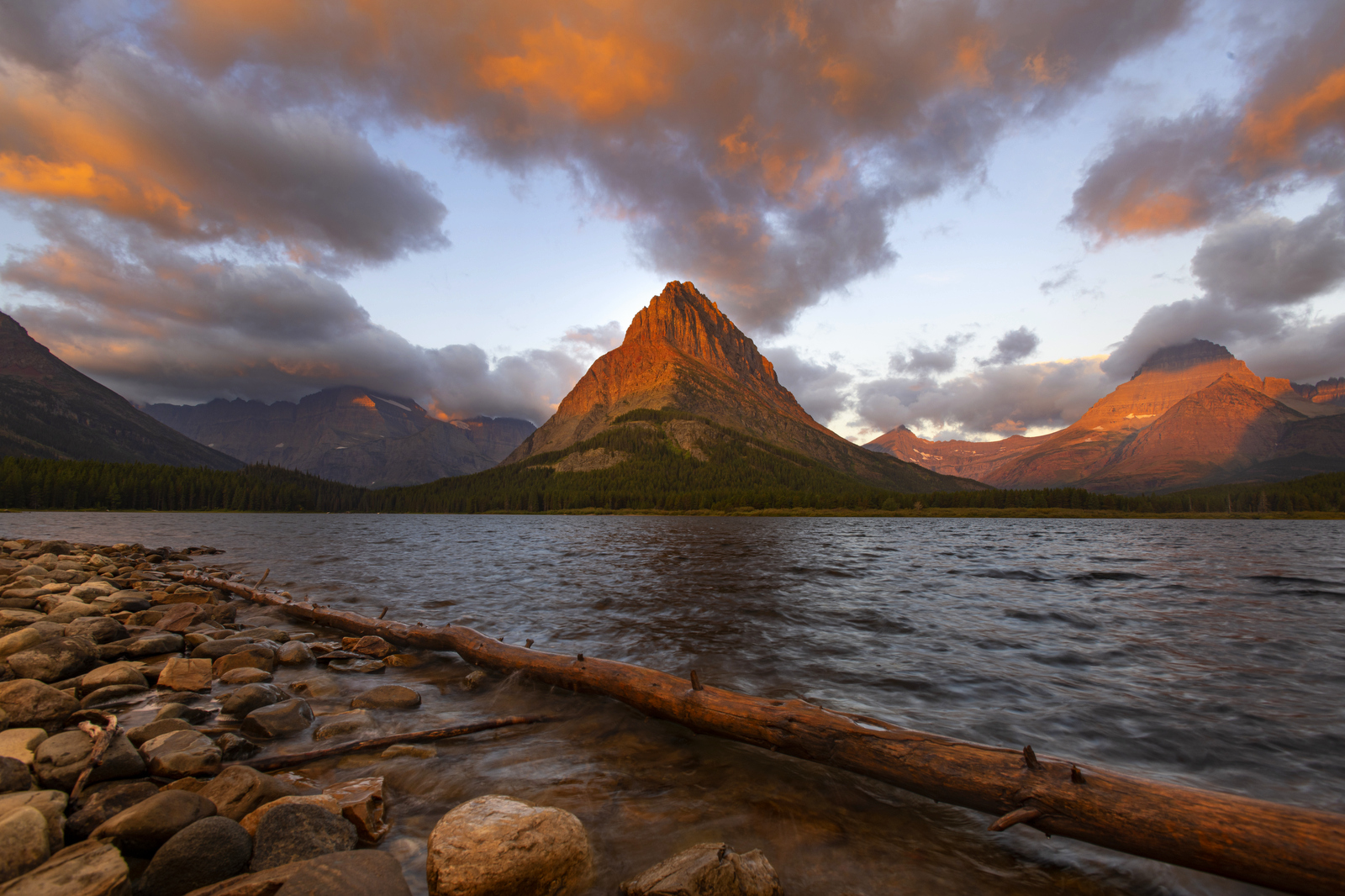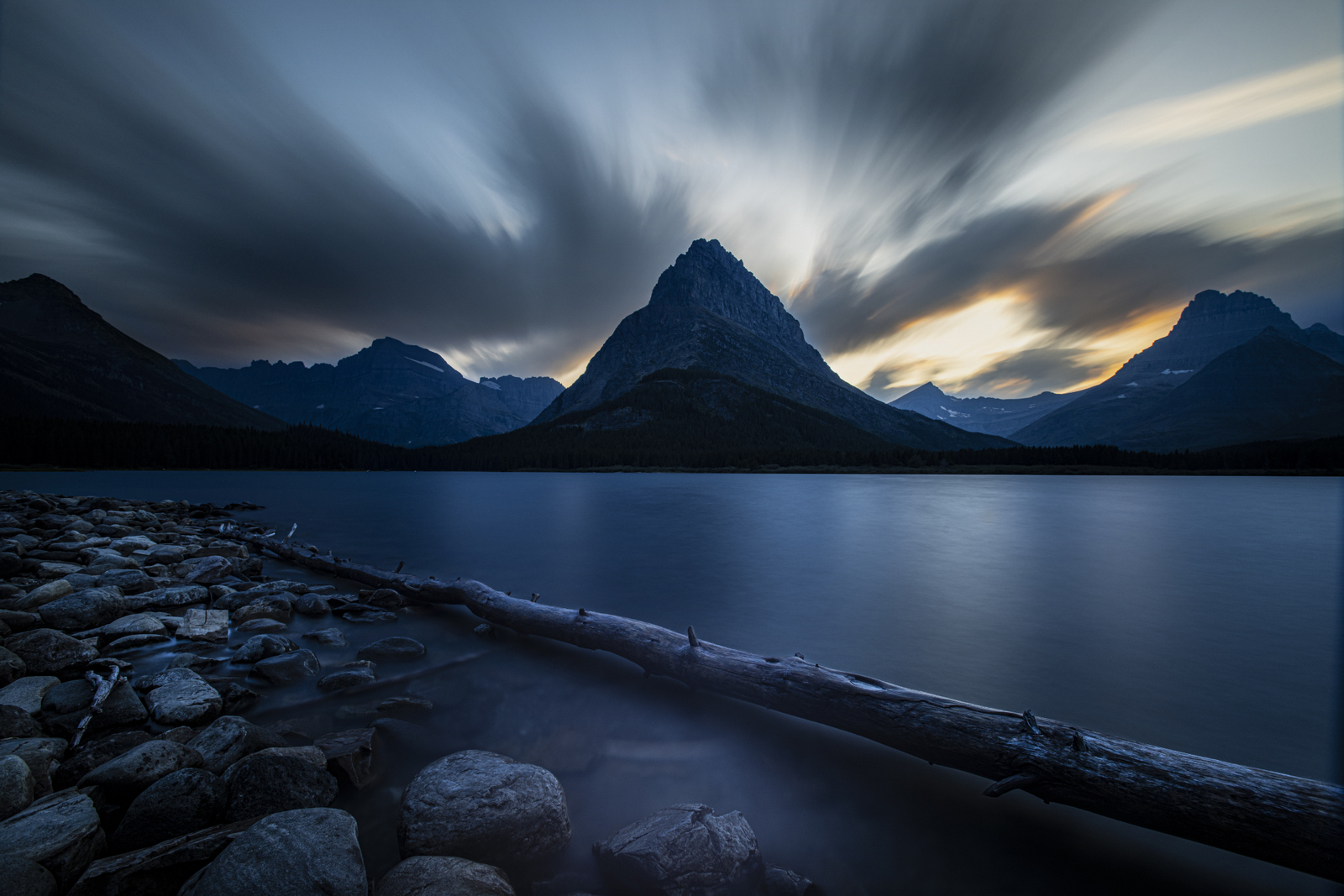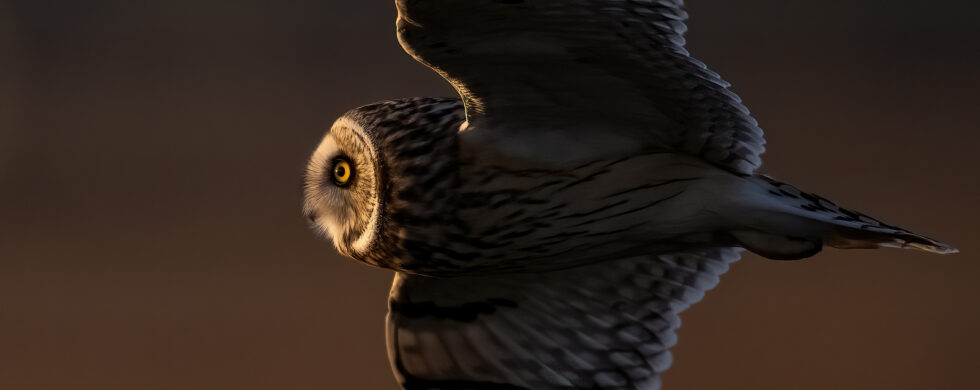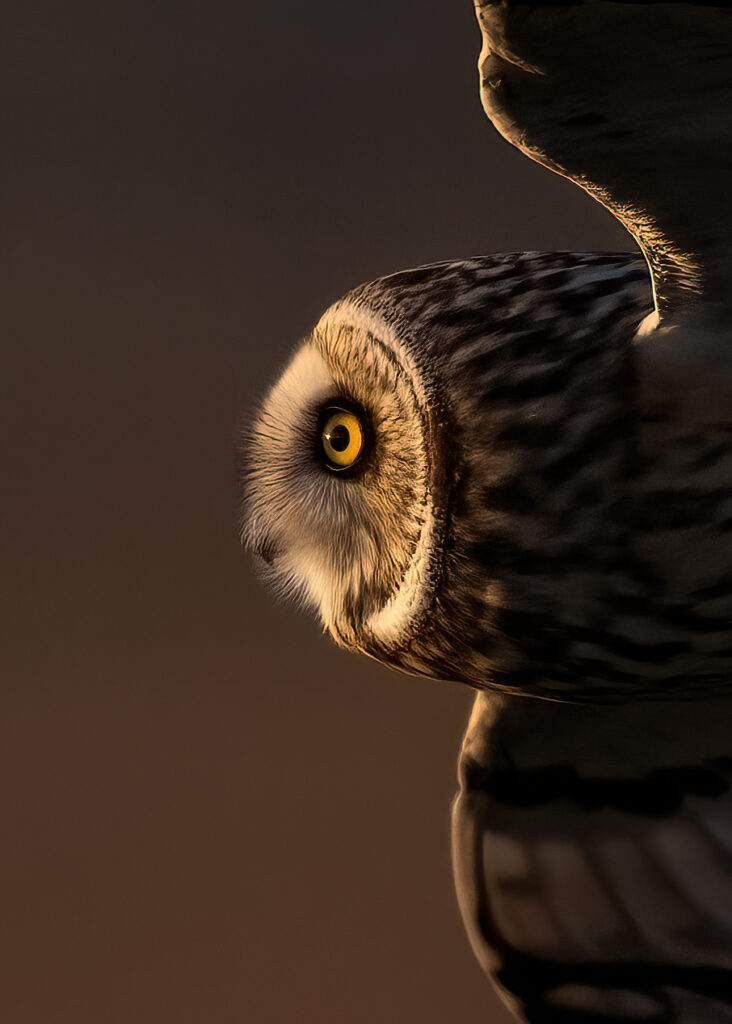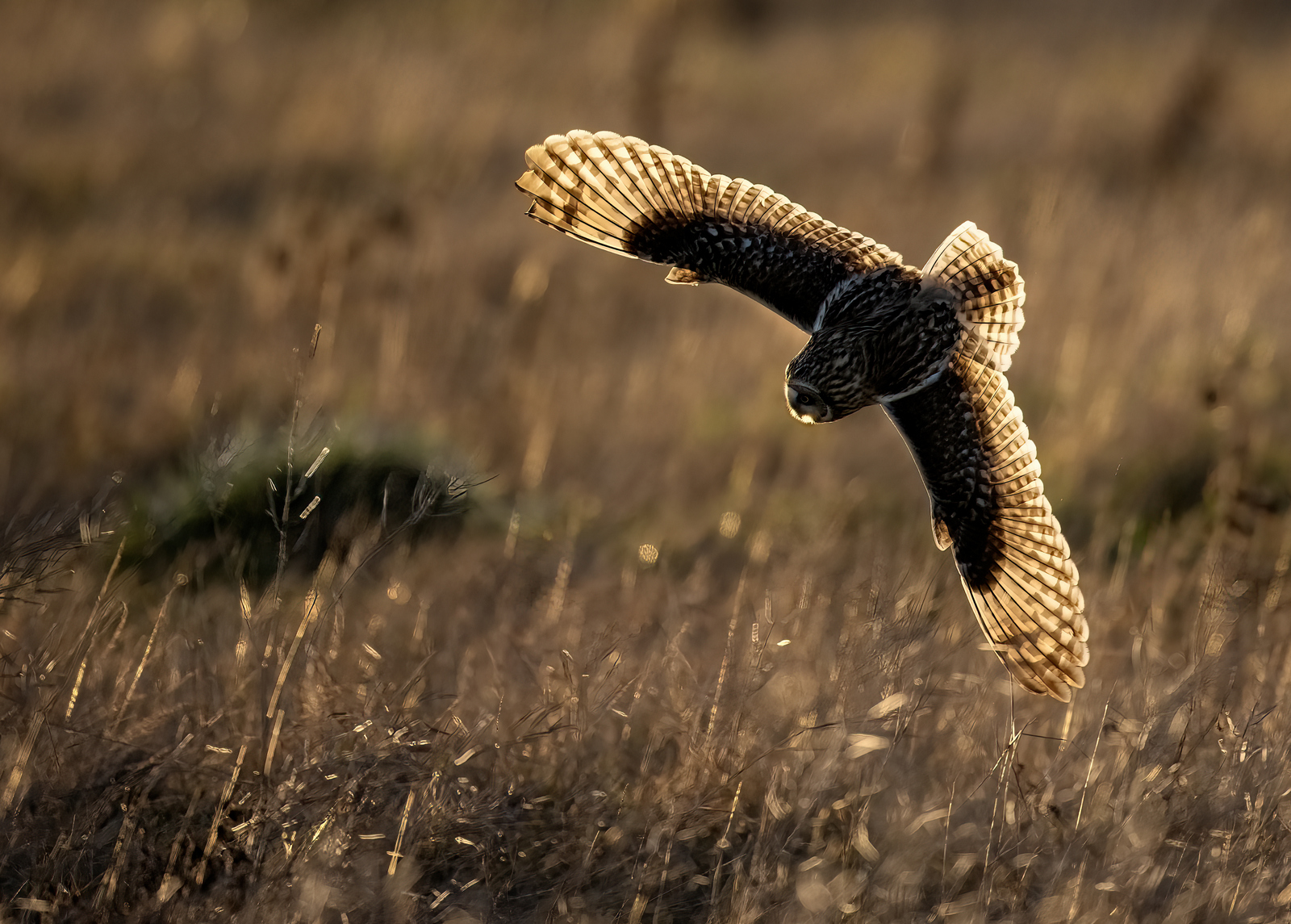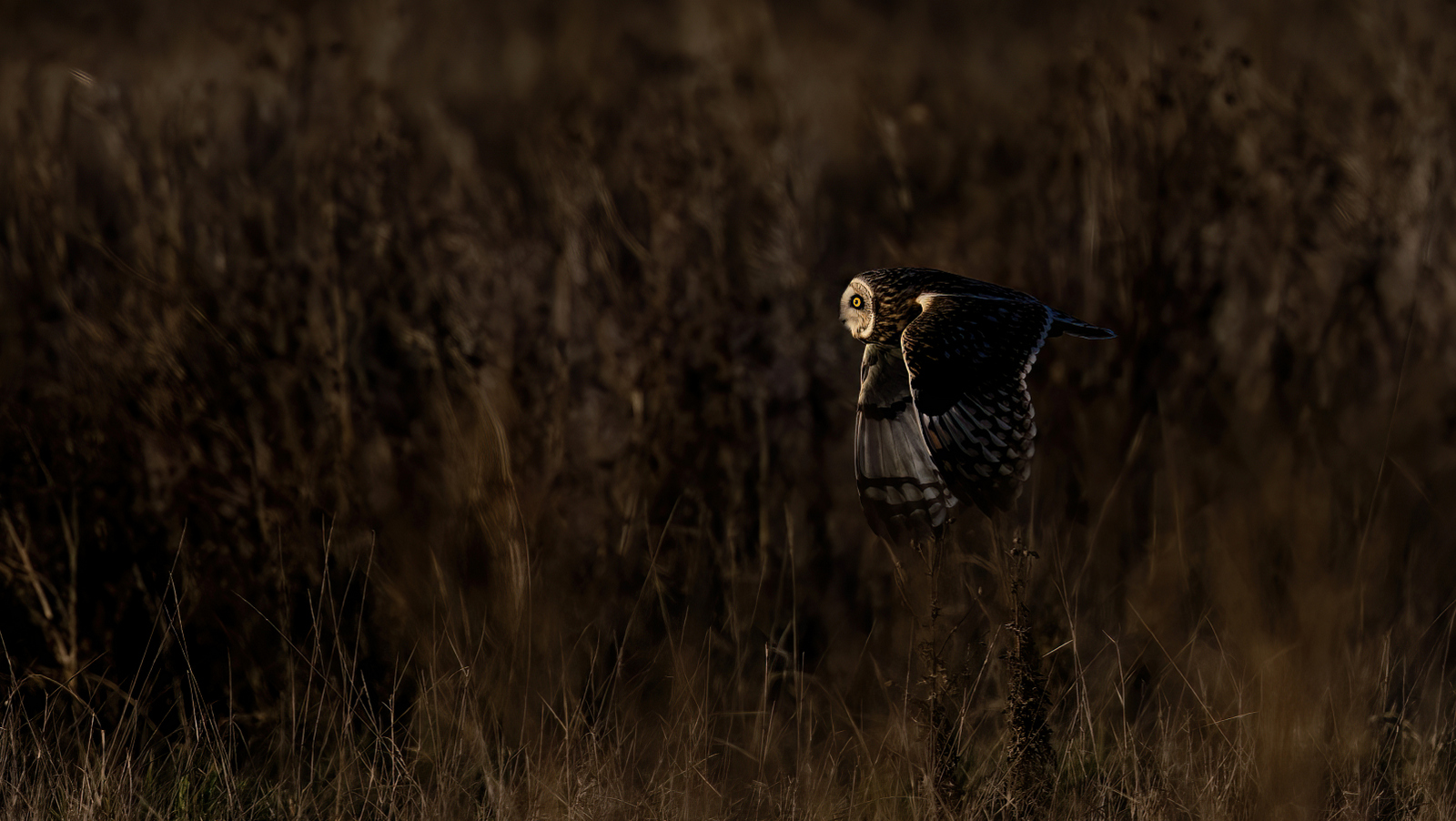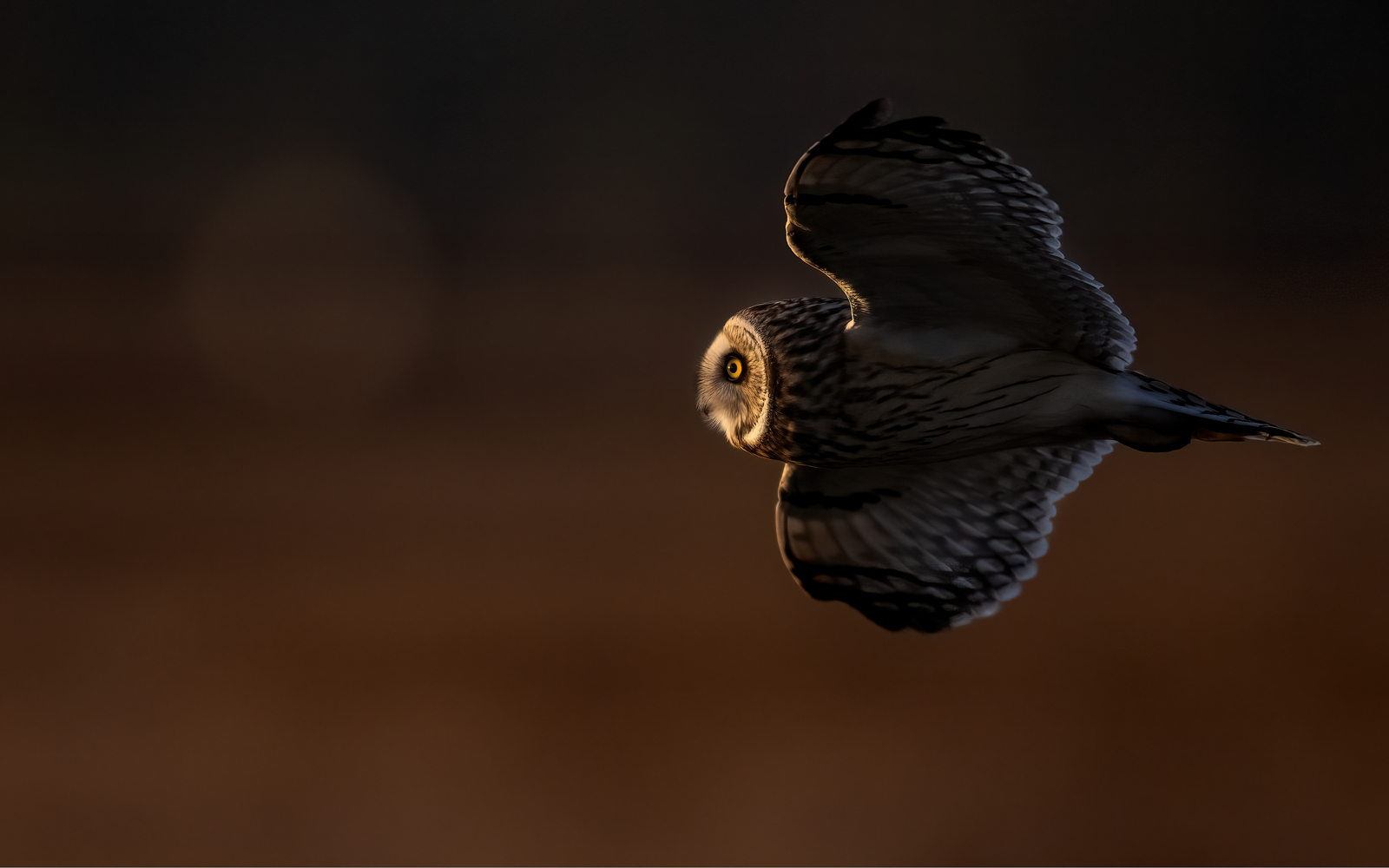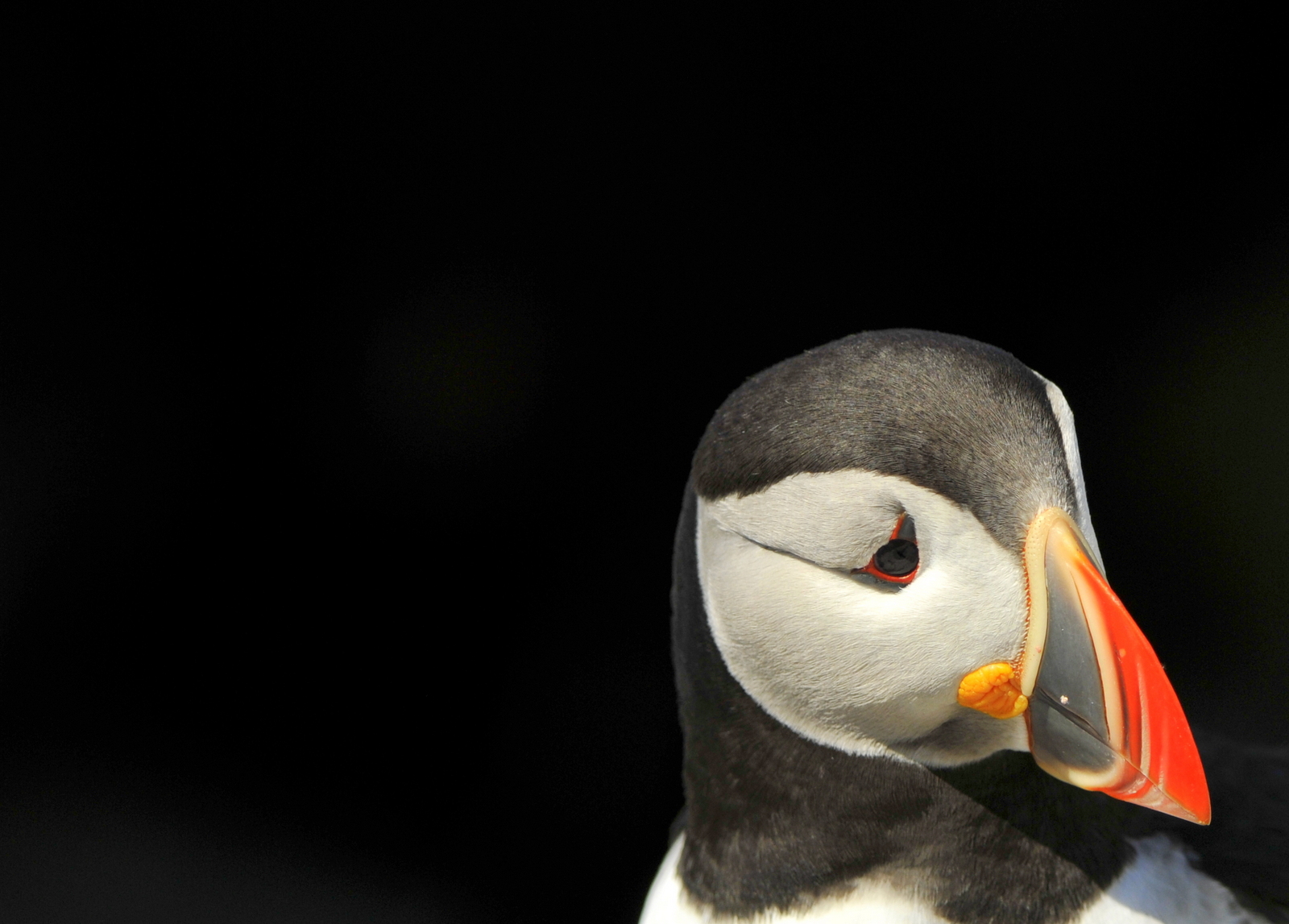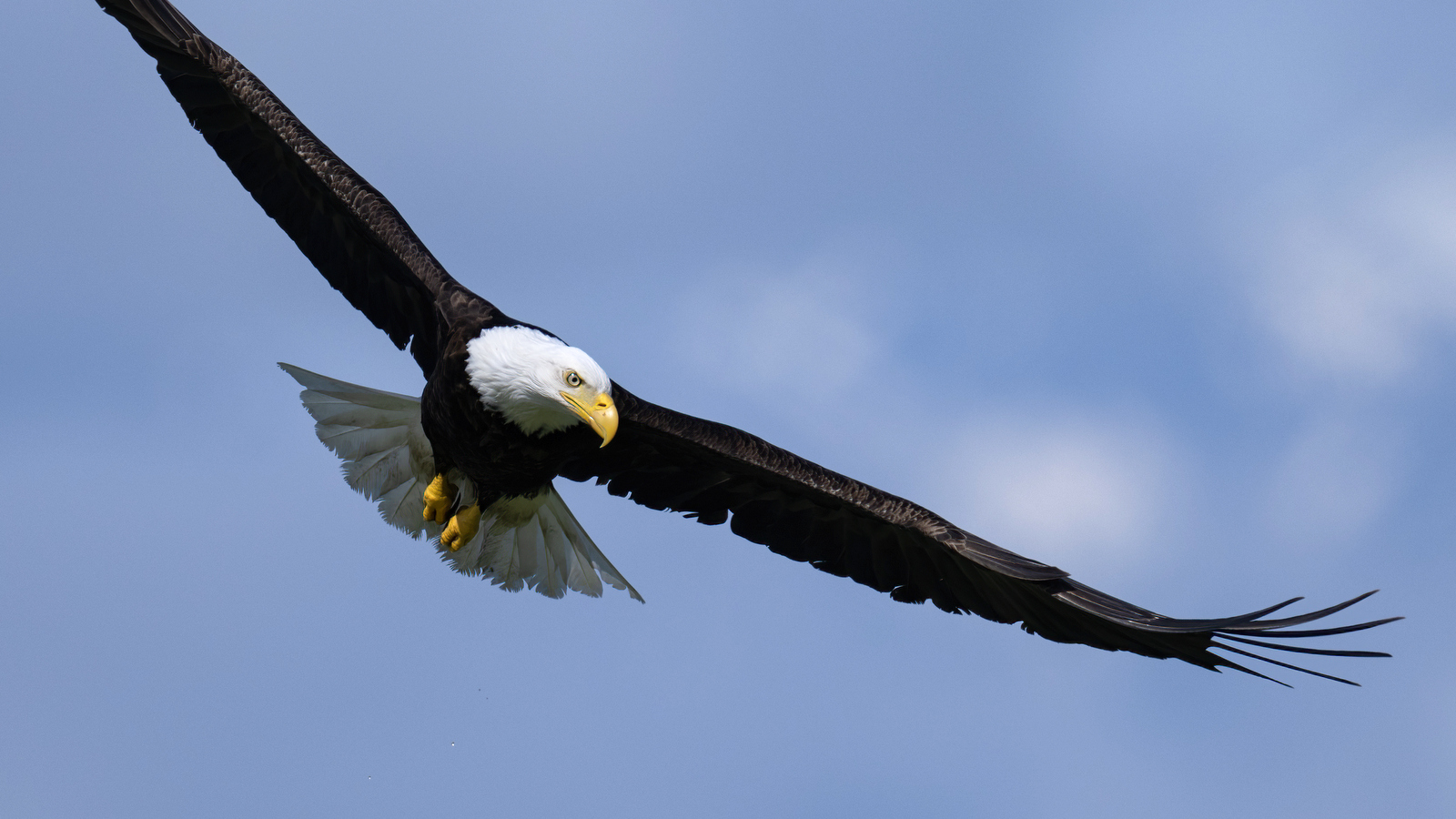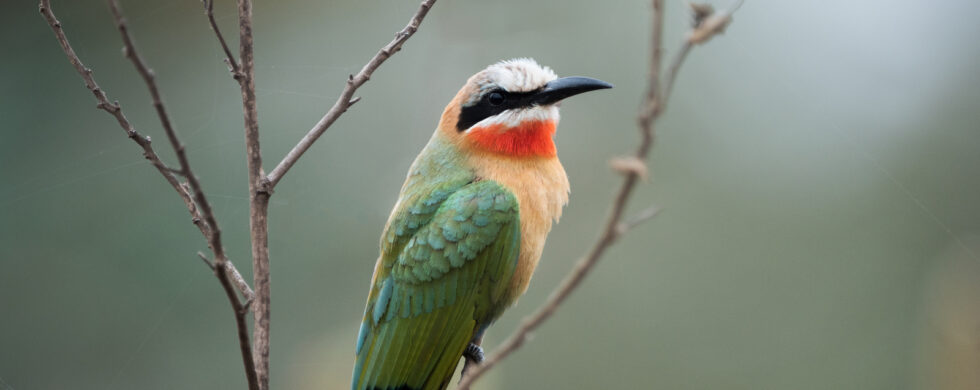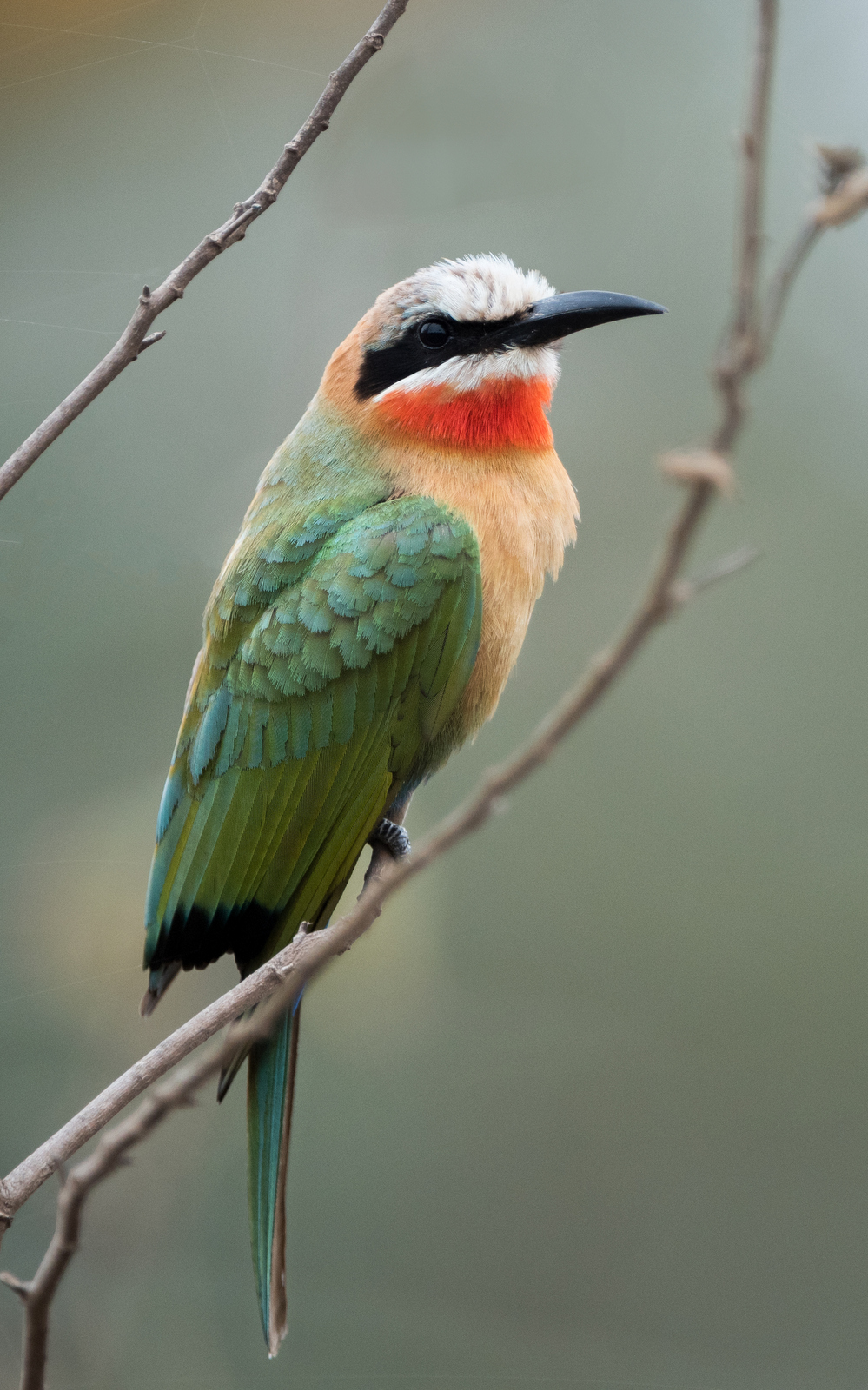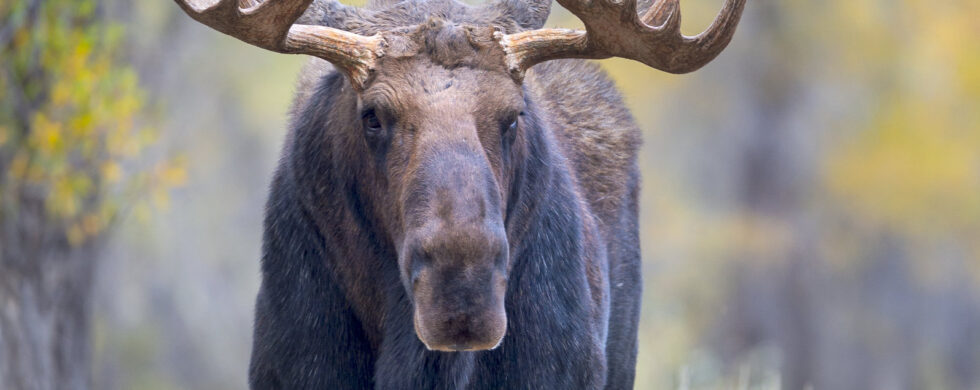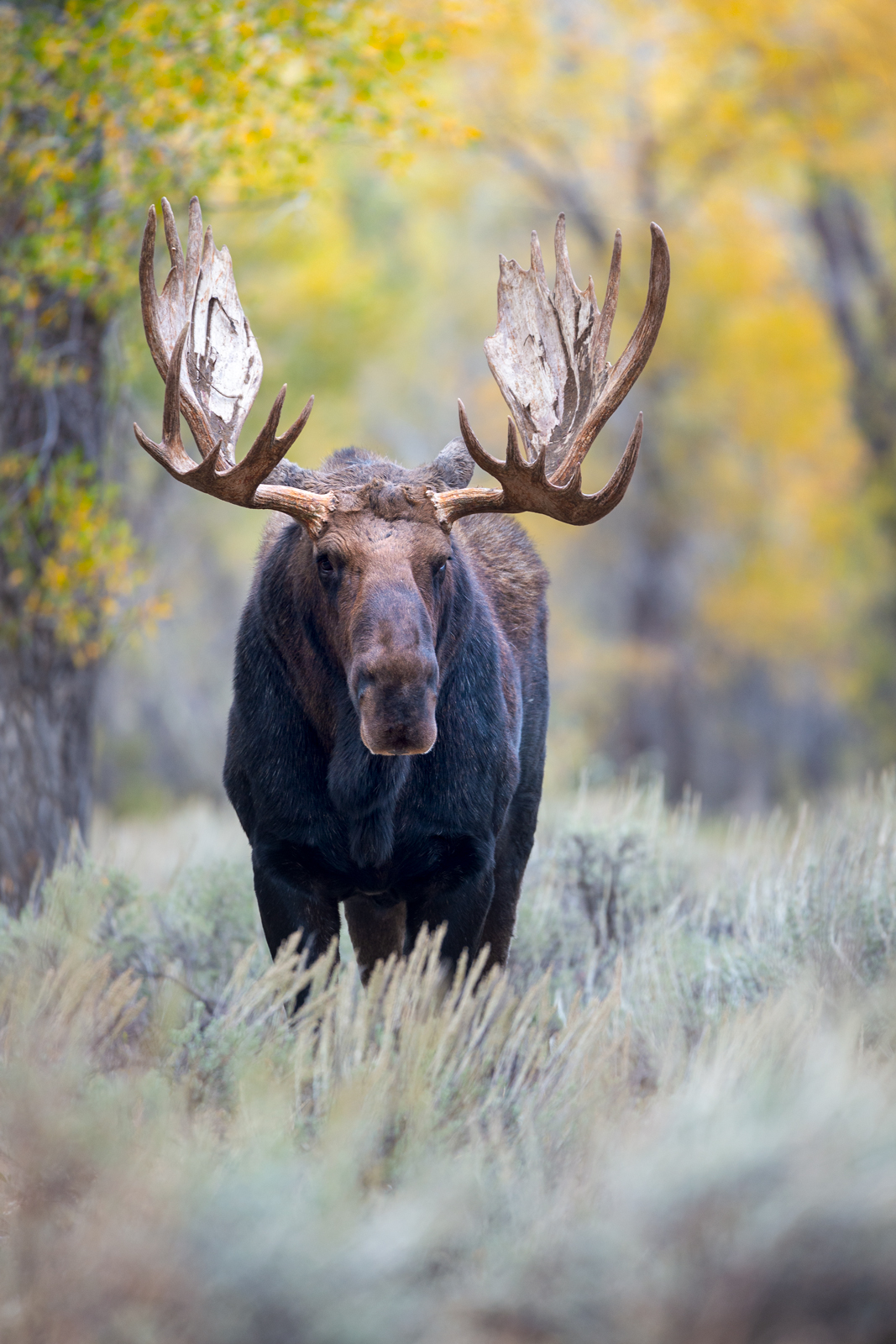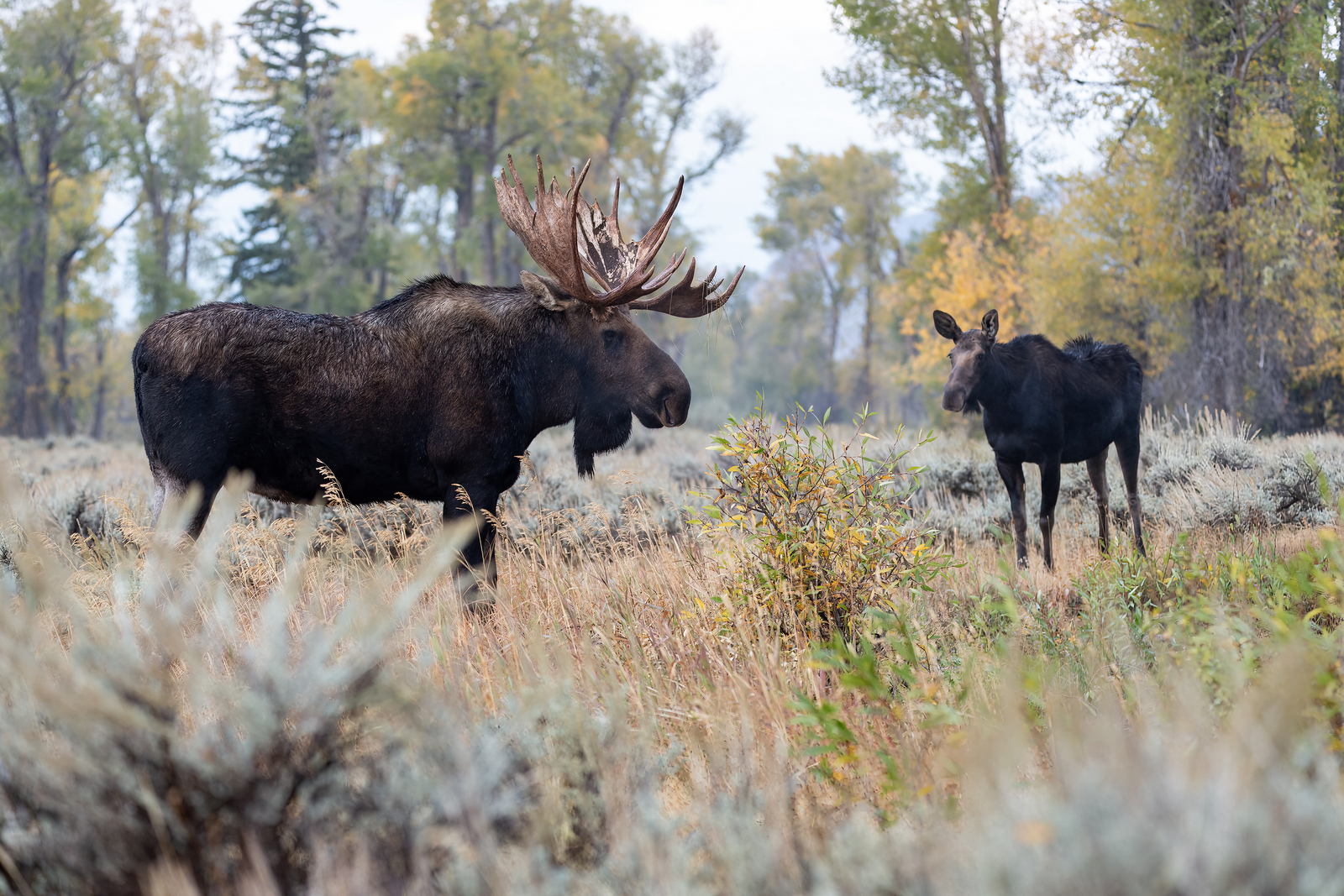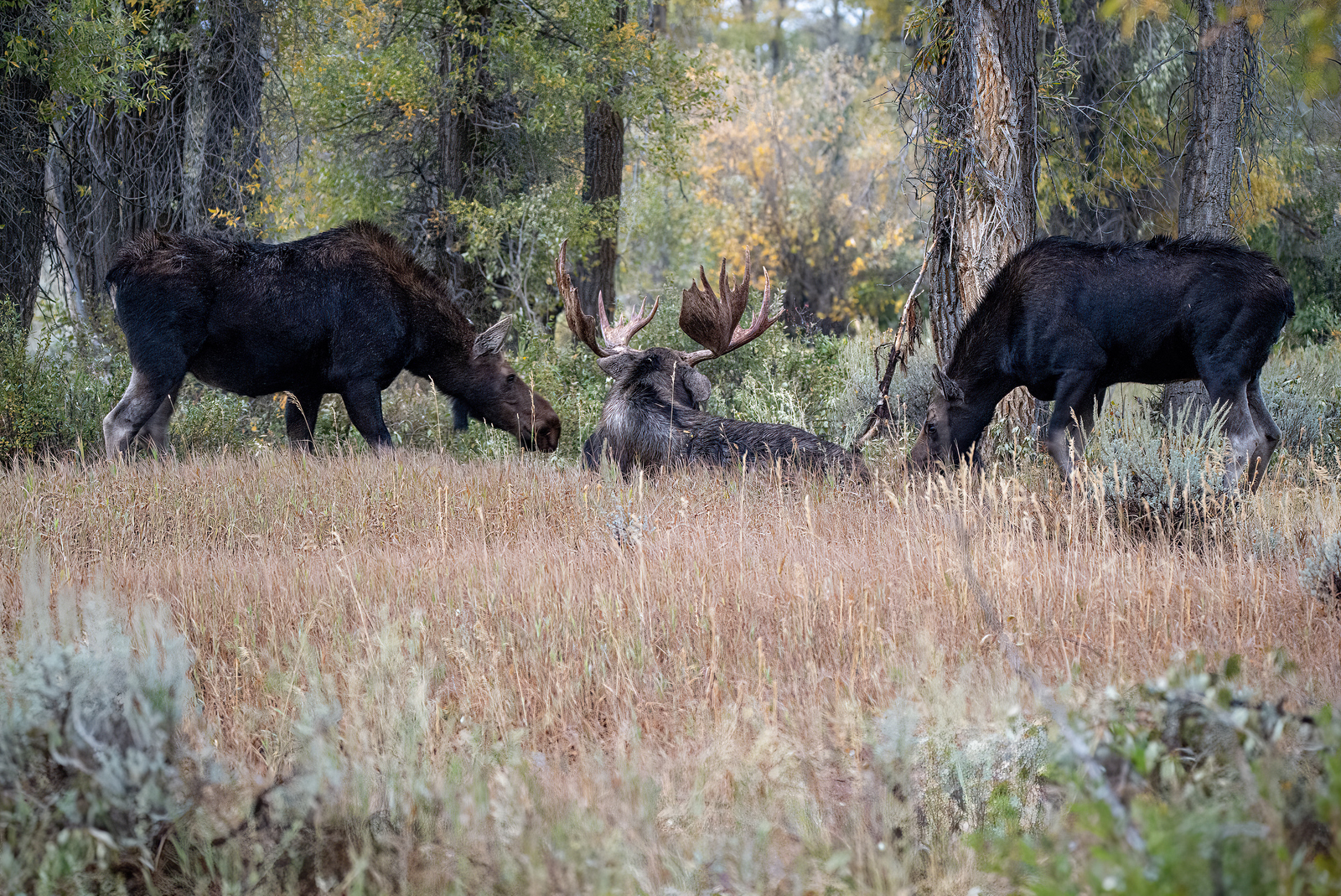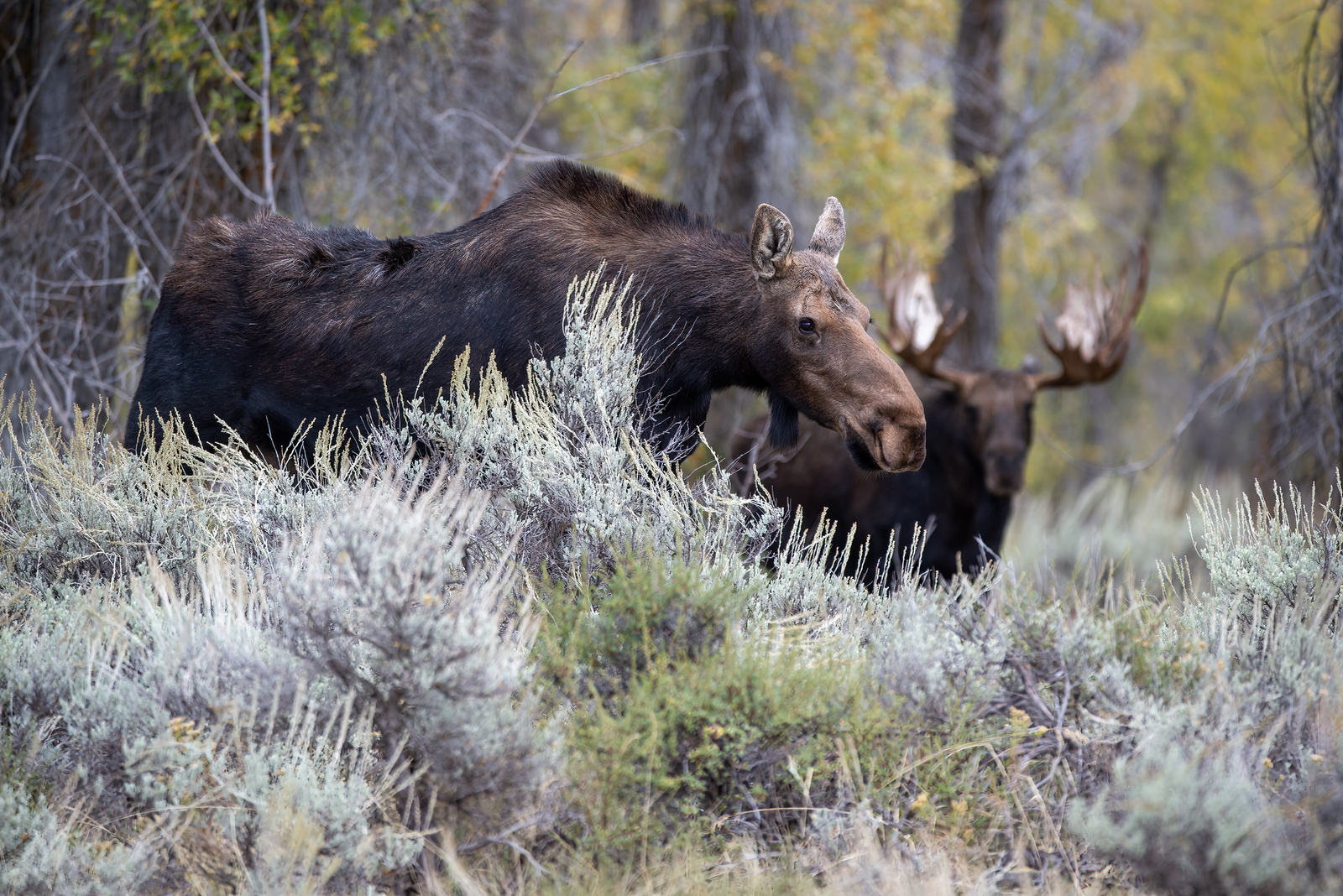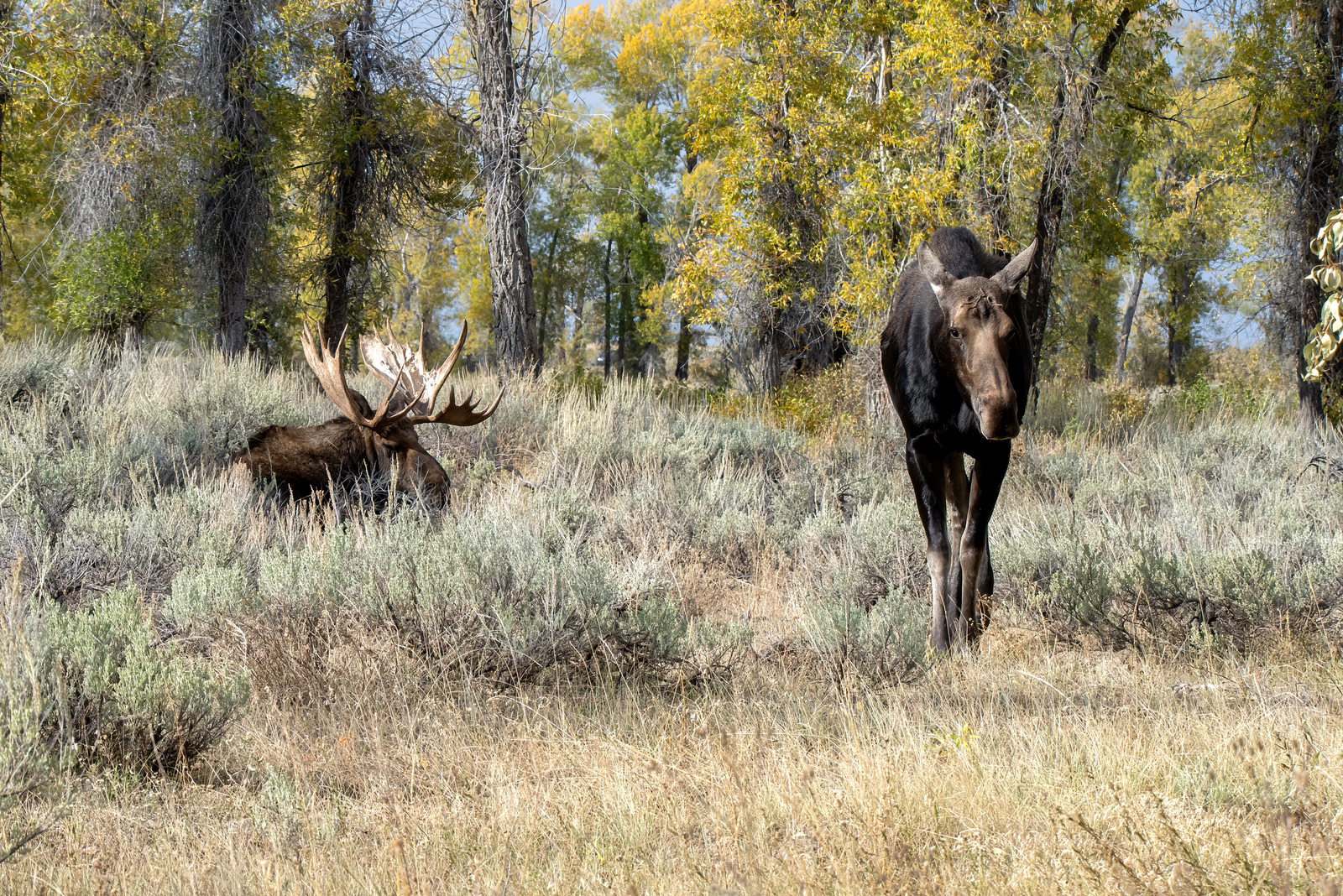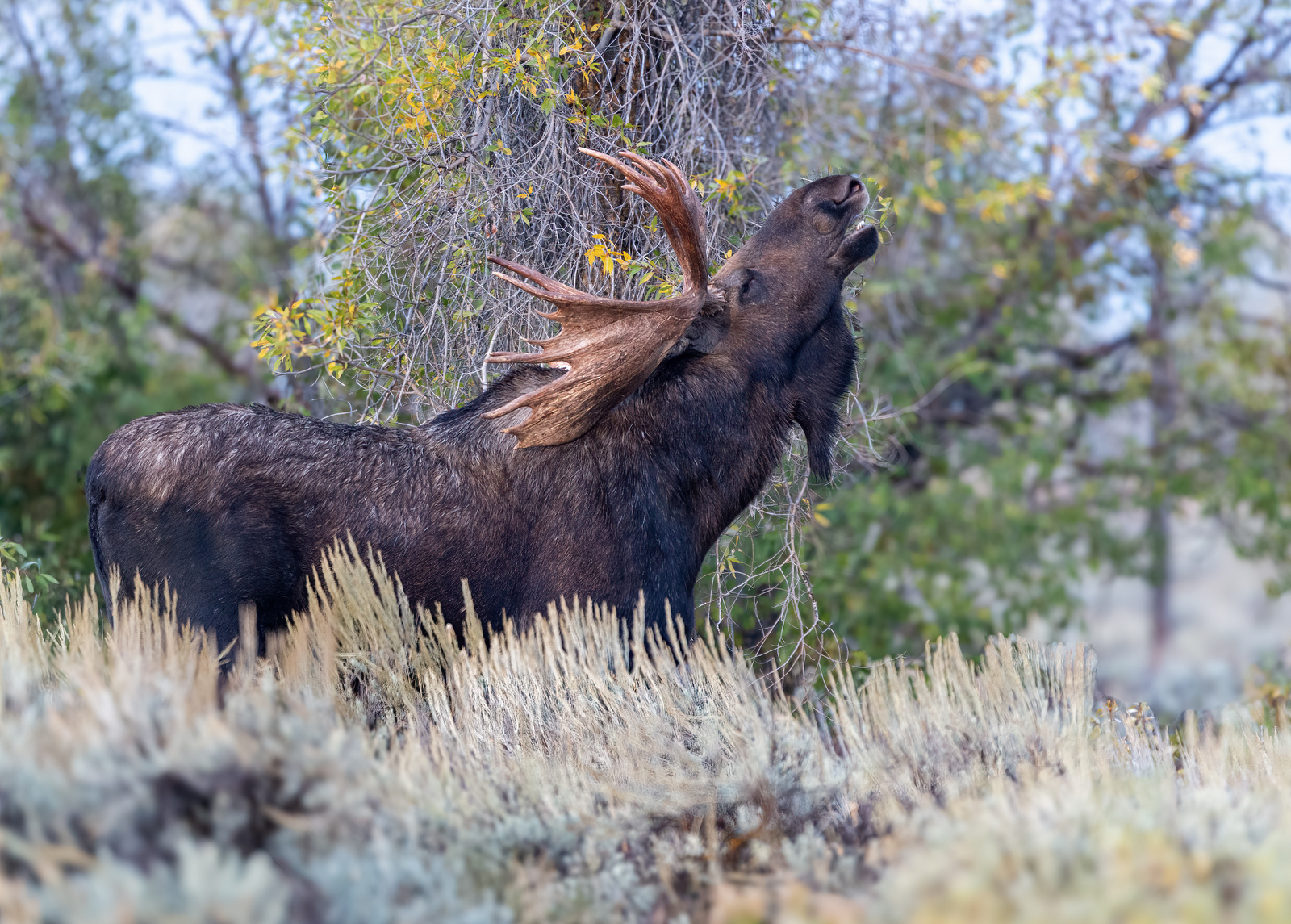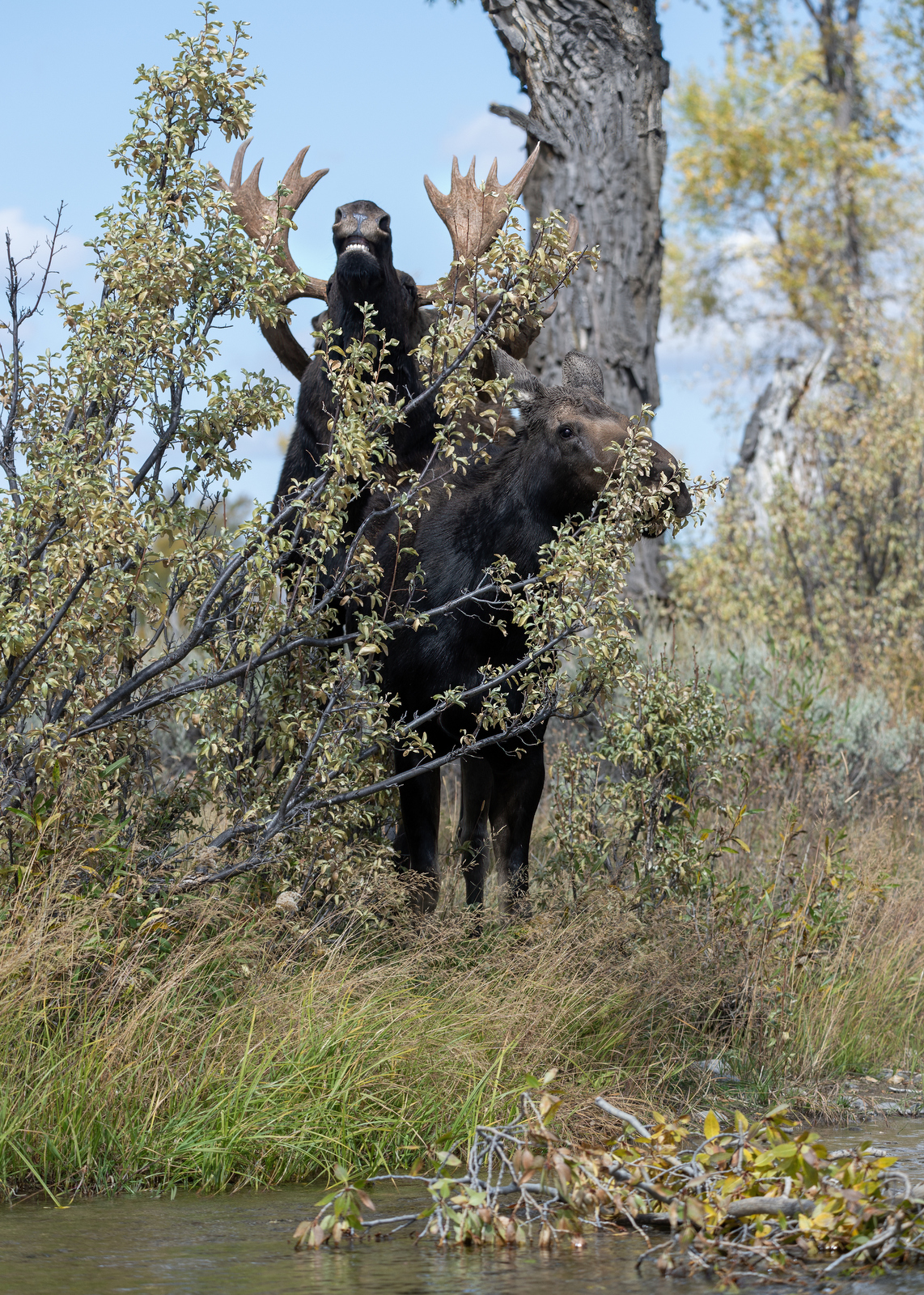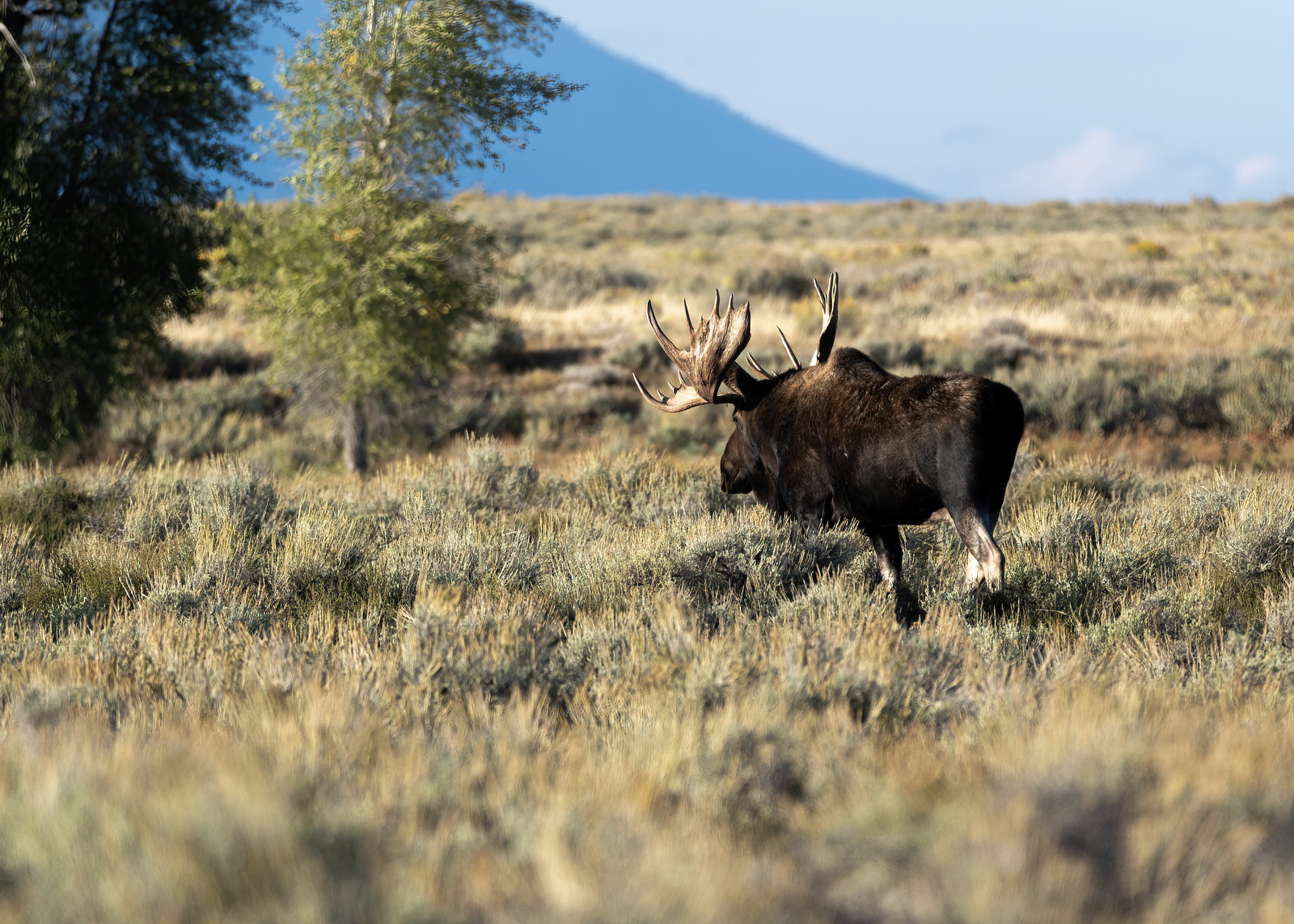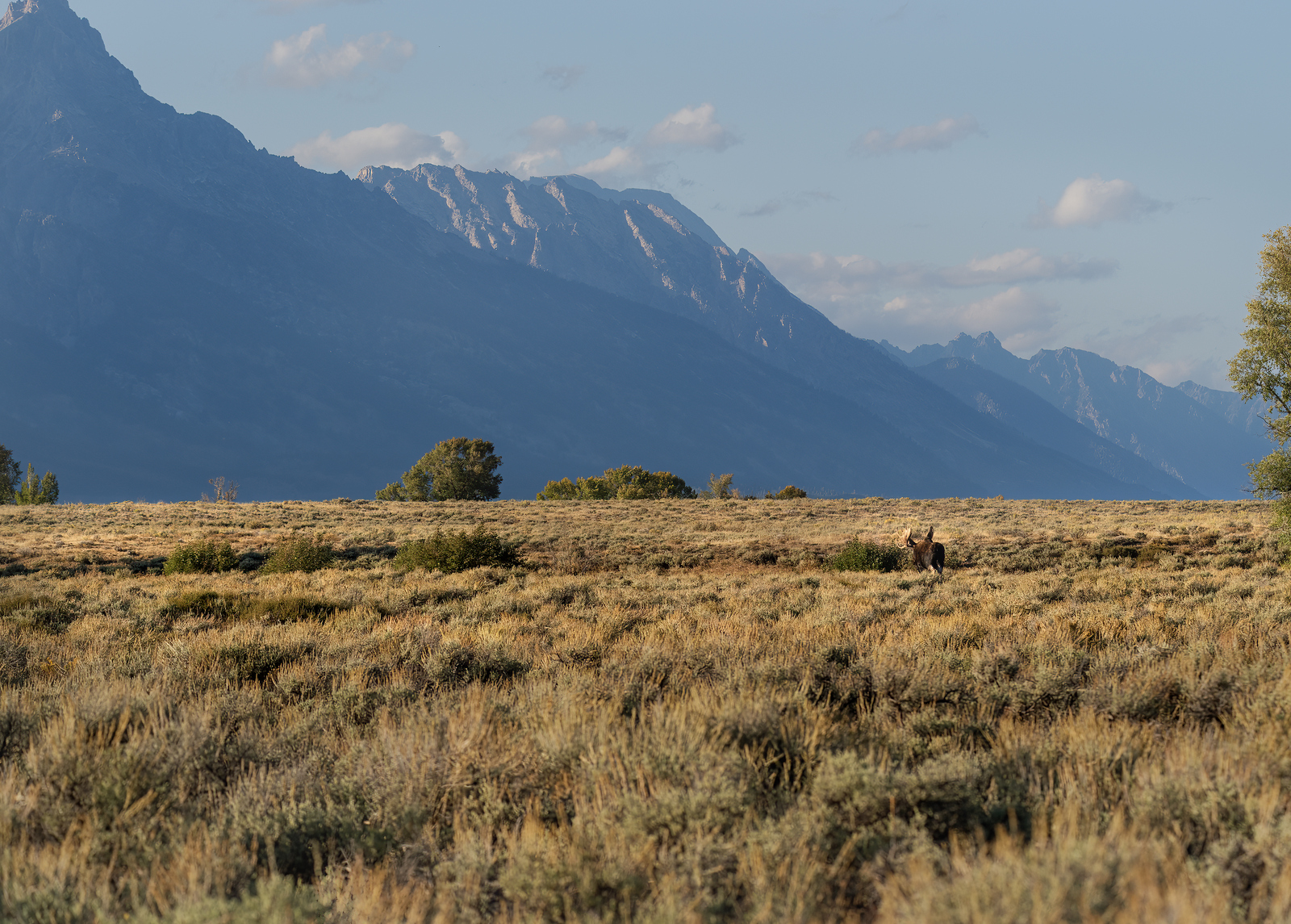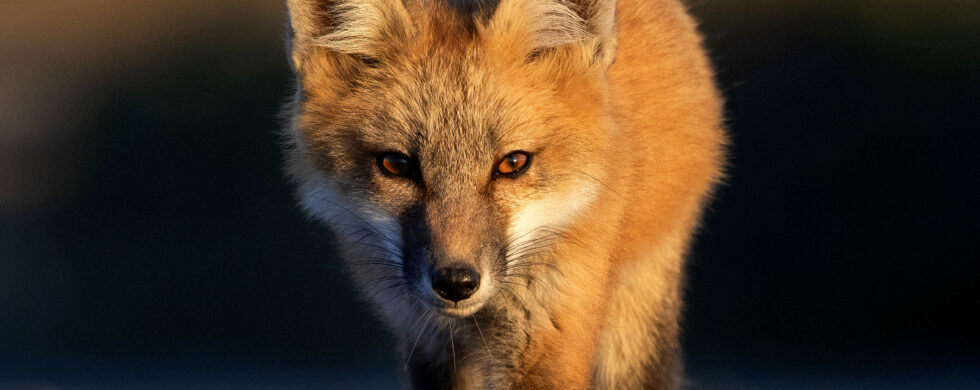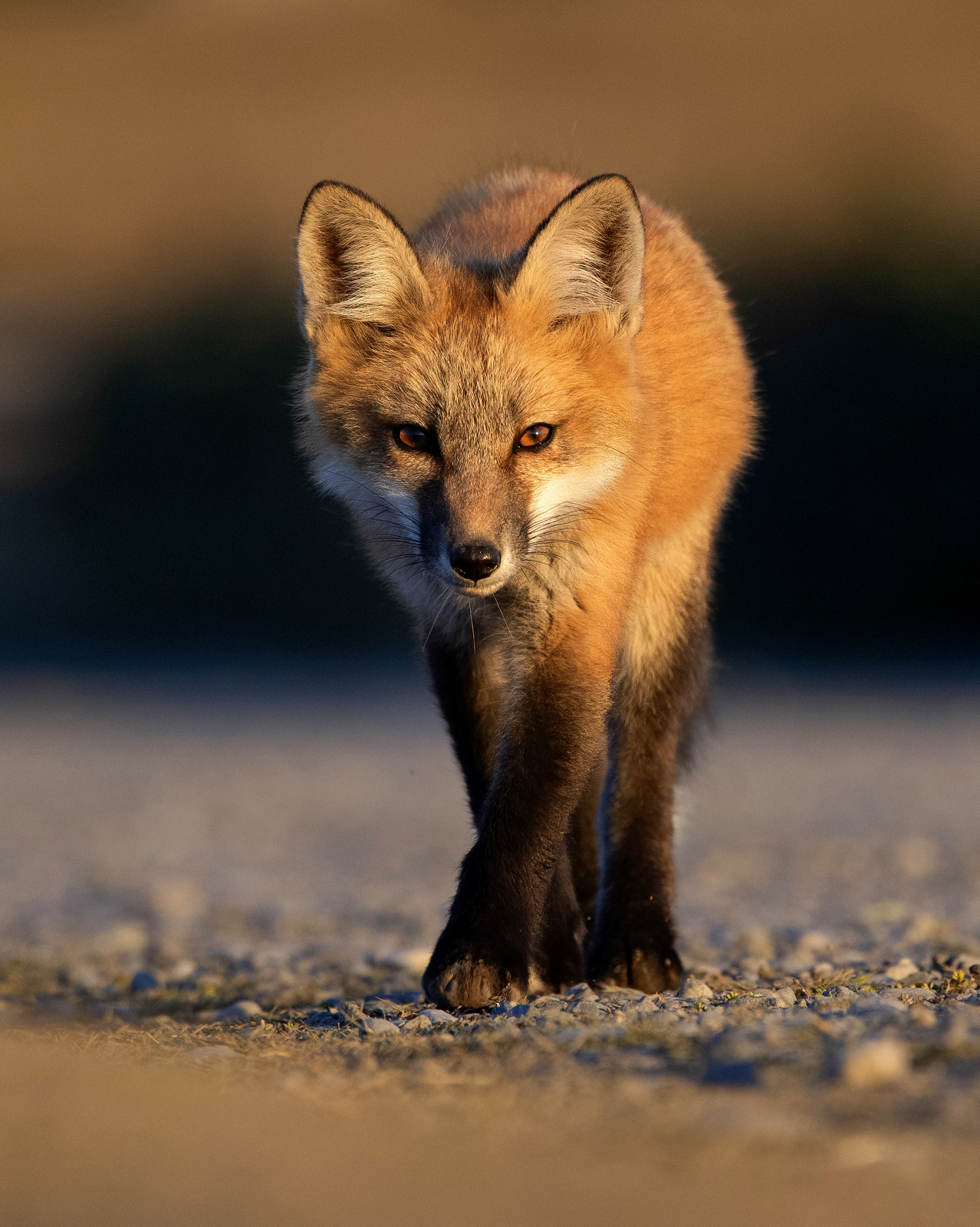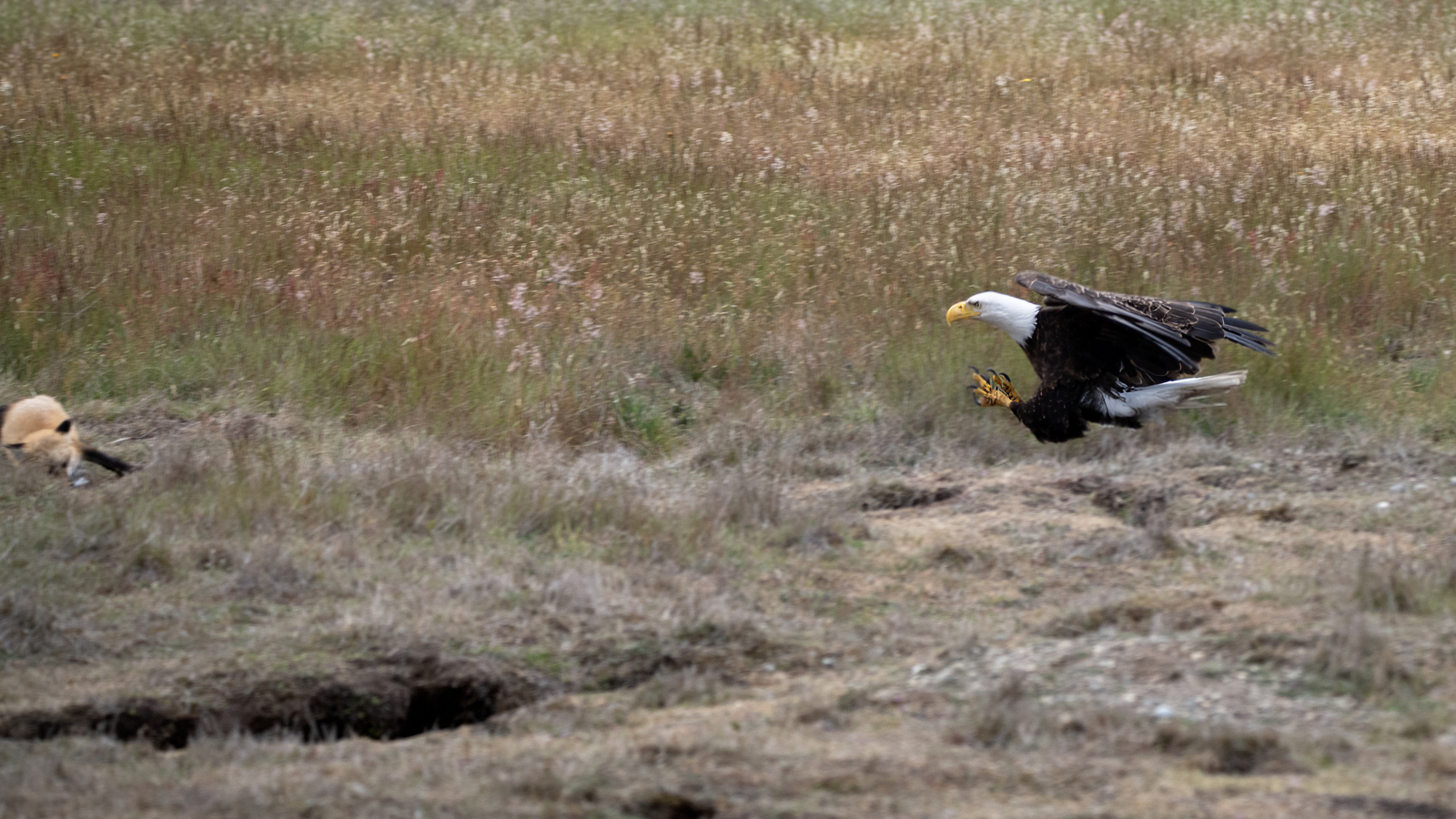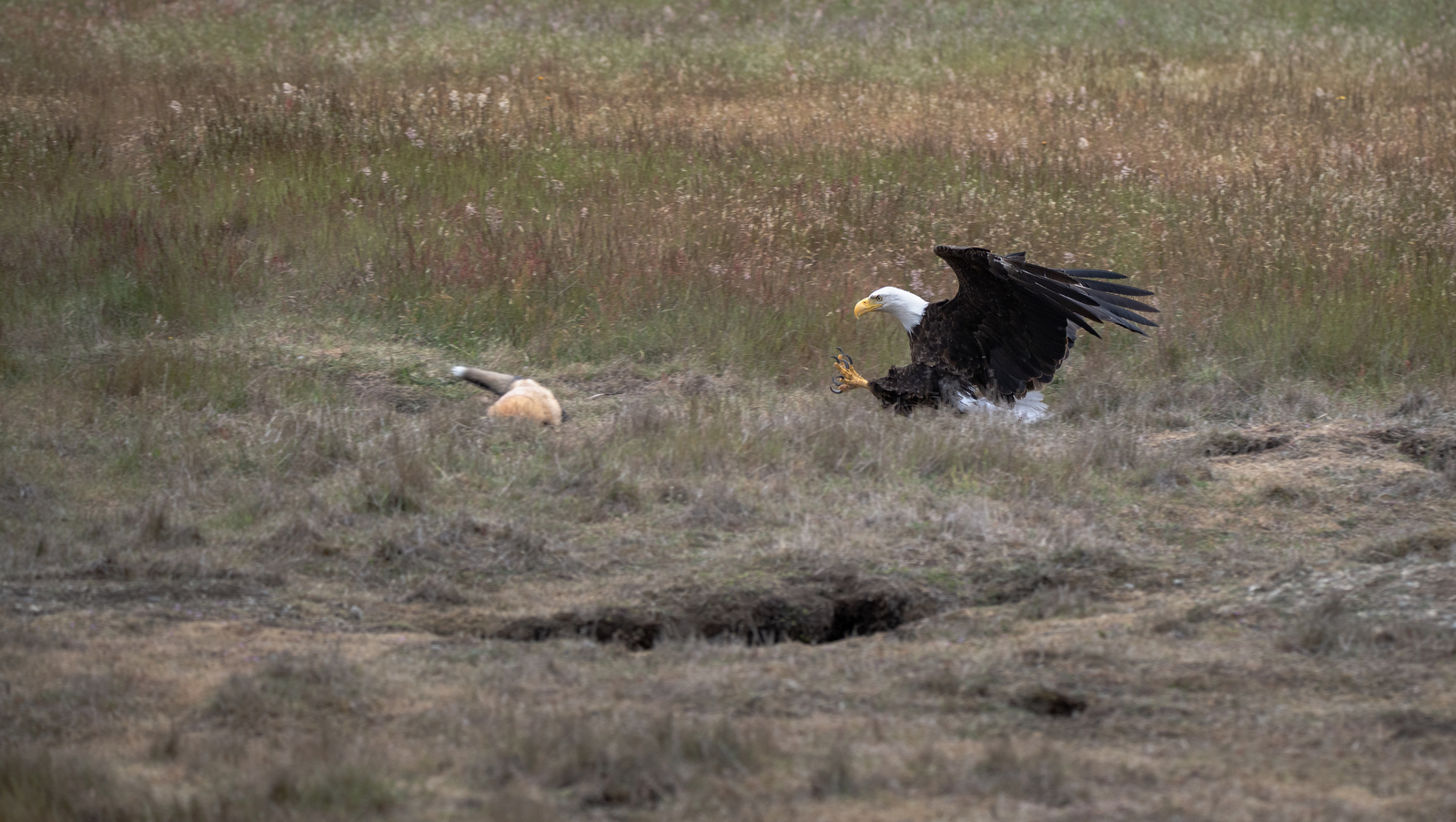31
Shot of the Month – May 2024
Wow, look at this guy! Now, THAT is how you make an entrance in style! This splashy, multi-hued fellow is a Mwanza Flat-Headed Rock Agama (MFHRA) – his name is almost as long as the list of colors covering his body.
There are about 30 species of agama lizards (in the family Agamidae for you science types) with most found across Africa though you can find a few in southeastern Europe and central India. The MFHRA is found in Tanzania, Rwanda, and Kenya. I photographed this flashy stud in Tanzania.
Based on this photo it is hard to believe that Agamas are usually adorned in brown or gray. Each year the drab males transform into this cacophony of color during the mating season to dazzle the females and win a mate. Check out the range of colors on this bold male. At his head, we start with shades of dramatic pinks and oranges. His upper torso is primarily colored in orange. Then we transition to shades of blue on the lower body, tail, and legs.
Like all reptiles the MFHRA is covered in scales, and in this case, very colorful ones at that. The scales are made of alpha and beta-keratin (Our fingernails and hair are made of keratin). Lizards often live in hot, arid climates and the scales help trap moisture inside the body and sometimes can be used like a suit of armor, protecting the body from bites and scrapes.
Did you notice those crazy-looking toes/fingers???
Agamas are active during the day and dine primarily on insects though they will eat eggs of other lizards and occasionally feed on grass, berries, and seeds. The Mwanza flat-headed rock agama lives in semideserts and can often be found basking on rocks or kopjes.
You can read more about agama lizards, and their silly behavior, in my post about a Red-headed Agama (shown below) that I photographed at the Lake Nakuru National Park in Kenya.
Click the button: Attitude a la Agama
Yeeees, I know. It seems that the Red-headed agama can also have orange-colored heads. Go figure…
Until next month….
Sources:
Wikipedia (Mwanza flat-headed rock Agama)
The Role of Scales on Reptiles and Fish
Nikon Z9, Nikon 100-400 mm (@ 310 mm), 1/640 sec, f/10, ISO 2200, EV +1.0
30
Shot of the Month – April 2024
This month we visit with the gorgeous Yellow-collared Lovebird (YCL). I photographed this small group of birds in the Tarangire National Park in Tanzania. The YCL, also known as the masked lovebird or the eye-ring lovebird is a small type of parrot.
There are about 410 species of parrots and most are found in tropical and subtropical parts of the world. Parrots have strong curved beaks, an upright stance, and clawed feet. Of this large group of birds, only nine are in the lovebird genus.
The YCL is a colorful explosion of greens and yellows with a black head, bright red beak, and white eyerings. Lovebirds get their name from their affectionate ways. You can often find them sitting together for long periods as they get, well, all luvvy-duvvy with their mate. They are very social birds, very affectionate, and form strong monogamous pair bonds.
Humans are fascinated with Lovebirds, and their parrot brethren, and they are popular pets.
Sadly, humans are loving these birds to death. How bad could it be? Let’s break it down:
- One-third of all parrot species are threatened with extinction due to the pet trade, hunting, habitat loss, and competition from invasive species.
- As of 2021 about 50 million parrots (half of all parrots on the planet) live in captivity (cages) with most being pets in people’s homes. Every year over 16 million parrots are traded in captivity.
- The Fischer’s Lovebird (looks just like the YCL but with an orange head) was the most trafficked bird species in the world through the 1980s and not surprisingly their population plummeted 30% since the 1970s. Only 200,000 to 1 million birds remain in the wild.
- Somewhat encouragingly many countries now forbid the trade of exotic birds. The US was the largest importer of wild birds until 1992 when it finally passed the Wild Bird Conservation Act (WBCA). The European Union didn’t pass its ban on importation of wild-caught birds until 2007! Despite these efforts, the illegal trade of parrots and other birds is still thriving. For example, approximately 2 million Fisher’s Lovebirds were captured in the wild and traded illegally between 1976 and 2016. Lovebirds are often given as Valentine’s Day gifts…sigh….
- Finding it increasingly difficult to secure wild birds the pet trade industry shifted to breeding birds for the ever-growing demand for feathered pets. Think puppy mills, with all the horrors that go with that, but for birds. Industrialized operations often house hundreds of birds in rows of barren cages and deplorable living conditions. Parrots are highly intelligent and such conditions can cause the birds severe mental and physical impairment and trauma.
- Parrots can be very affectionate and cute when young but if not raised and trained properly can become aggressive and may bite causing serious injury. After a few months, many buyers find the demands of caring for a bird to be too much leading to parrots being surrendered and rehomed FIVE times before finding their final home or dying prematurely from neglect and abuse. Parrots require an enormous amount of care, attention, and intellectual stimulation to thrive and many owners are not ready or able to meet these demands leading to traumatic lives for the parrots.
A common problem is that large parrots that are cuddly and gentle as juveniles mature into intelligent, complex, often demanding adults who can outlive their owners, and can also become aggressive or even dangerous. Due to an increasing number of homeless parrots, they are being euthanised like dogs and cats, and parrot adoption centres and sanctuaries are becoming more common. Parrots do not often do well in captivity, causing some parrots to go insane and develop repetitive behaviours, such as swaying and screaming, or they become riddled with intense fear. Feather destruction and self-mutilation, although not commonly seen in the wild, occur often in captivity
Lovebirds and parrots have complex dietary, social, intellectual, and emotional needs – placing them, often alone, in a barren cage, for 10-80 years (some parrots can live a LONG time) is cruel and unusual punishment.
“Polly want a cracker?”
F*&$ that! Polly wants to be left alone.
Until next month…..michael
Sources:
Animal Welfare Institute – Bird Trade
Freedom for Animals (Blog: LOVE BIRDS? IF YOU DO, LEAVE THEM IN THE WILD!)
Wikipedia – Yellow-collared Lovebird
Nikon D5, Nikon 600mm, 1.4 TC (850 mm effective), f/5.6, 1/500 sec, ISO 280,
31
Shot of the Month – March 2024
Above we have a classic scene captured on the plains of the Serengeti, the place of legend and lore for wildlife lovers around the world. A trip to the Serengeti is on many a bucket list for wildlife aficionados. And many lucky enough to make that “once in a lifetime” trip now seriously ponder if they can make it a “twice in a lifetime trip” as the draw to this magical place is overpowering.
Having lived in Africa for many years I had the good fortune of being able to visit “the Serengeti” on multiple occasions and it is always on my list of potential places to visit again. For the uninitiated, let’s break it down.
Where is it?
This wildlife mecca is found in Tanzania and Kenya, in East Africa.
What is it?
The Serengeti ecosystem is a geographical region spanning the Mara and Arusha Regions of Tanzania. This region is made up of a diverse habitats including riverine forests, swamps, kopjes, grasslands, and woodlands. Over 30,000 km2 (11,583 mi2) of this area is protected by a collection of national parks and reserves. Almost half of that area (about 14,750 km2 or 5,695 mi2) is part of the Serengeti National Park. Other protected areas nearby include
- Ngorongoro Conservation Area (8,292 km2) (3,202 mi2)
- Maswa Game Reserve (1,415 km2) (546 mi2)
- Grumeti Game Reserve (410 km2) (158 mi2)
- Ikorongo Game Reserve (600 km2) (232 mi2)
- Loliondo Game Control Area (6,200 km2) (2,394 mi2)
In southern Kenya, the northern tip of the Serengeti is protected by the Masai Mara National Reserve (1,510 km2) (583 mi2).
Serengeti Plains?
A large portion of the Serengeti ecosystem is a vast, flat, open plains, covered mostly in grass. This open grassland covers the entire lower third of the Serengeti NP. Plains are described differently depending on the climate they experience:
- Grassland (temperate or subtropical)
- Steppe (semi-arid)
- Savannah (tropical)
- Tundra (polar)
The vast expanses of grass in the Serengeti are therefore referred to as the Serengeti Savannah as it falls in equatorial (tropical) Africa. The Serengeti Savannah receives enough rainfall to support grass and some trees, but not enough rainfall to support a true forest. Trees tend to be scattered here and there across the plains. A savannah is a vegetation zone between a tropical rainforest and a desert. The area experiences a strong contrast in weather – the rainy season is intense with lots of rain, followed by extended periods of high temperatures and no rain.
While the Serengeti is the most well-known in Africa there are also savannahs in Zimbabwe, Botswana, South Africa, and Namibia.
What makes it special?
The Serengeti has the largest concentration and diversity of wildlife on the planet. By the numbers:
- The Serengeti is home to the “Great Migration,” the largest movement of animals in the world. Each year over two million wildebeests, zebras, and antelopes traverse the grasslands (1.3-1.7 million wildebeests, 200,000 zebra, 500,000 Thomson and Grant’s gazelle) as they follow the rains in search of greener pastures and water. The Serengeti is home to an incredible diversity of herbivores that include cape buffalo (30,000), African elephant (7,500), giraffe (4,000), black rhinoceros (200), warthog (15,000), eland (7,000), waterbuck (3,000), topi (27,000) and many others.
- The Serengeti is famous for its collection of large predators that include lions (3,000), leopards (1,000), cheetah (250), and spotted hyenas (7,500).
- Africa’s “Big 5” can be found in the Serengeti.
- Bird lovers can find over 500 species of bird life in the Serengeti ecosystem.
No other location on the planet can match the sheer scale, density, and diversity of wildlife found in the Serengeti and it has been voted the top “Seven Natural Wonders of Africa.”
If you are up for an adventure definitely consider a visit to this magical place.
A black and white version for that old-timey look:
Until next month…..michael
A few more scenes from the Serengeti:
Sources:
Savanna Biome: Climate, Locations, and Wildlife
Difference Between Savanna and Grassland
Nikon Z9, Nikkor Z 100-400mm f/4.5 -5.6 VR S (@100mm), 1/400 sec, f/5.6, ISO 64, EV -0.33
28
Shot of the Month – February 2024
Each fall bighorn sheep rams gather at the National Elk Refuge in Wyoming (located just next to the Grand Teton National Park) in hopes of mating and passing along their genes to the next generation. Alas, only the largest and strongest rams earn the right to mate and often will have to fight other rams for dominance. These battles involve smashing those massive horns into each other with great force until one adversary relents:
But even after these brain-numbing battles, the victorious ram’s work is not done. Oh, no, far from it. Now the ram must court the females and stay by their side until one goes into estrus. He must be absolutely relentless in his surveillance. If she climbs up a mountain, he must follow. She goes back down, down he must go. He must fight off any male that approaches her. Day in, day out. Hour after hour. This behavior is called “tending” and is the most successful strategy for winning over a mate. Ewes are most receptive to tending males. (Sage female readers nod their heads in agreement…)
Some males may try a “blocking strategy” to keep a female from reaching the areas where rams are tending ewes. Other males fight a tending male but the ewes are usually not receptive to this approach. (More nodding among the readers….)
Once a female goes into estrus chaos ensues. The dominant male will chase her and attempt to mate but she will not give in so easily. She often spurns all suitors and forces the males to chase her for extended periods. She is testing the males to identify the strongest to ensure that only the best genes are passed on to her offspring. At times multiple rams will chase the ewe. As a ram was trying to copulate with a female I have seen other males dash in and head butt the male to break up the act. So rude!
Two males in pursuit of a female:
In this scene, eight males watch over a female! (she is the one at lower left in the image)
In the first image, I panned my camera to track the running sheep and used a slow shutter speed to blur the background. This is a high-risk technique – if my panning motion does not exactly match the speed of the running animals we end up with a blurry mess. Even if I get the panning right, the animal’s movement may still be at an angle that does not produce a pleasing image. Hundreds of attempts may only create one or two acceptable shots.
Or none.
The key is to keep shooting and taking as many images as possible with the hope that a few will work.
The panning blurs out the background and creates a lovely oil painting effect. The blurred feet of the sheep convey speed and give a sense of the pursuit and energy of the chase.
As you may have gathered, procreation for bighorn sheep is not for the faint of heart. Each fall a ram must endure a grueling gauntlet of battles and tests of patience and stamina that can last for months. All this to earn a few brief moments with an ewe and the possibility of passing on his legacy.
Until next month…
Sources:
Nikon D5, Sigma 150 mm – 600 mm (@ 600 mm), f/14, ISO 100
31
Shot of the Month – January 2024
This month we travel to Glacier National Park in northern Montana for an iconic view of Swiftcurrent Lake. I shot this image on the rocky edge of the lake looking west toward Grinnell Point – the tall peak in the center of the image. Grinnell Point is part of the Lewis Range of mountains. This spot is also the site of Many Glacier Hotel – this historic hotel was built in 1914 and commands epic views of the lake.
This image makes up the “Fire” part of this post. I arrived at the water’s edge long before sunrise and set up my tripod and camera. As I sat in the dark for the second morning in a row I had to wait for the sun to slowly climb above the mountains behind me. My heart began to jump when I sat the first orange beams light up the clouds. With each moment the light got warmer and slowly painted the scene from top to bottom. First, the clouds caught fire and then eventually the mountain began reflecting back that glorious warm glow. I kept shooting feverishly until the color began to fade. Success!
In the image below we see the “Ice” part of this post. I am at the same spot along the water’s edge, this time in late afternoon with the sun setting behind the mountain in our view. This time the clouds were a bit too dense to light up dramatically with the sunbeams. For this image, I used a very long exposure (90 seconds) to allow the clouds to move across the sky and smooth out the surface of the water of the lake. The tone and color of the image couldn’t be more opposite than the sunrise shot. This shot is dark and brooding and feels and looks ice cold.
It is always fun to revisit a scene over and over to explore how the look, feel, and tone can change dramatically with the time of day. With the change in weather. With the change in seasons. At any given moment Mother Nature offers the proverbial box of chocolate with each scene — you are never sure what delight you will get.
Until next month…..m
Nikon Z9, Nikon 17-35 mm (@17 mm), f/11, 1/5 sec, ISO 64
31
Shot of the Month – December 2023
I have talked in the past about how getting a great shot often requires a chain of miracles…for wildlife photography that list of miracles can include:
- Just finding the ^%%# animal!!
- Getting close enough to said animal
- Great light
- Great behavior
- Correct camera settings for the given scene
This stunning image of a Short-eared Owl (SEO) is proof that miracles, plural, can happen every so often.
#1 Finding the ^%%# animal!!
SEOs often migrate into Washington State each winter from the Arctic. They love to hunt for mice and voles in the flat farmland found in parts of the state. So there are known locations where one can find these owls. So you’re telling me there’s a chance…? (Any Dumb and Dumber fans out there?)
2. Getting close enough to said animal
The owls don’t take much notice of us humans but they often hunt in fields that are too far away. If you are patient, they will usually, eventually, hunt in a field near you before moving on. On some days they do. On some days, they don’t. Long lenses are still often needed to “get close enough.”
3. Great light
4. Great behavior
Good light in the Pacific Northwest in the winter is in SHORT supply. Most days are grey and filled with rain. I specifically traveled to the site on this day as a bit of sun was in the forecast.
In the LAST hour of this day, the sun was painting the field in GLORIOUS light (Miracle #3). And then, a SEO flew close to my location and began to hunt!! (Miracle #4).
I began to tremble with excitement – it was all coming together.
5. Correct camera settings for the given scene
Fortunately, I have enough practice with SEOs to know that their white faces will easily become overexposed in direct light. I underexposed my shots by 1.33 EV (That is A LOT!) And I knew how insanely fast these birds fly so I increased my shutter speed to 1/3200 sec to stop the action and avoid blurry images.
Time to get to work…
The owl was hunting in a field that faced the sun. The lighting was therefore stunning but also, incredibly harsh. The shadows and intensity of the light would change dramatically depending on the angle of the bird relative to the sun. Given how fast she was flying by me the lighting changed every fraction of a second. And with the sun so low in the sky the glare blinded my left eye (my shooting eye) as I looked into the viewfinder. The bird flew multiple sorties – doing small loops up and down the field. As she arrived to my far right I would start shooting until she arrived to my far left, where, at this point, I was now looking directly into the sun – leaving me partially blinded for a few seconds.
Shooting into the sun…
The SEO would bank right, fly back up the field, eventually bank right again and the shooting would begin anew. We did this for close to an hour as tears ran down my face from the stress on my eyes.
Another fly-by…
Having the owl relatively “close” allowed the possibility of getting an image. But given how fast they fly, and how erratic their flight is, it was almost impossible to keep them in the viewfinder with a 600 mm lens. The angle of view on this lens is 2 degrees, offering a very tiny view of the world. I would often track the bird and then she would just vanish as she banked sharply to dive toward prey. With my 12-pound camera/lens combo on a tripod, I was jumping around like I was shooting a Gatling gun as I spun from one side to the other to try and keep focus on this juking, banking, diving, chaotic bird. Ever seen the crazy flight pattern of a butterfly or a moth? Yeah, like that but much, much faster.
I realize that is a lot of photo techno-babble to non-photographers, but in short, photographing these little flying rockets, in this extreme light, at close quarters, is tough.
Ten years ago it would have been almost impossible to get this shot. The camera technology was just not there yet. But with each year the equipment gets better and allows for images like this, even from amateurs like me.
What is most shocking to me, is the absolute clarity and sharpness of the image. A true MIRACLE given how fast she was moving – in this one instance, I managed to pan at just the right speed to match the speed of the bird. You can see every little feather on her face and beak.
And the lighting….on those eyes….the drama. The rim of light on the wings! Mwah (Chef’s kiss)!
Here is the first image, re-cropped to show more of the scene. Mother Nature at her finest…
I love how photography allows us to capture and hold on to these moments that would otherwise be lost in the blink of an eye.
Until next month…..m
Nikon Z9, Nikon 600 mm, f/4, 1/3200 sec, ISO 640, EV -1.333
30
Shot of the Month – November 2023
What can I say, some days you just gotta mix it up a little….
In this unorthodox composition we have a Northern Hawk Owl peering up from the corner. This image makes me smile each time I see it — hopefully it brought a grin to your face also.
In a previous post (Center of Attention) I talked about the “rules” of composition. Well, let’s call them guidelines. Suggestions perhaps. And I usually do follow the recommended “rule of thirds” for most of my images.
But not always:
In the first image I like how the owl seems to be peering in, as if engaging me – “Hellllooo, Mr. photographer. Are you looking for meeee?”
In the second image it seems that I caught this Atlantic Puffin as he was just on his way out. Makes me ponder, “Where is he going”? This second image is really breaking the rules as you normally want your subject to be looking into the image — with the owl we at least have the subject making eye contact with us.
But with the puffin, he is looking out, looking outside of the space of the image. This creates all that negative space behind him which is normally verboten. But given the space is a deep black, it creates a powerful contrast to the dramatic lighting and coloring of the puffin. I think it works and the emptiness actually has a presence that is compelling for the image. What is going on back there? Why did he leave it behind?
It’s also recommended to not cut off part of your subject…
I would like to say that I made an artistic decision here to purposely cut off the Bald Eagle’s wing but in this case I was just having a hard time keeping up with the eagle as he suddenly slowed down to begin banking back in the opposite direction from where he was flying. But when editing the image I leaned into my mistake and cropped the image even more to create a compelling image. Our eye is drawn to the upper edge of the photo where the wing leaves the image. From there our eye will tend to naturally follow the wing down until BAM, a close-up view of that stunningly beautiful and menacing face. That beak is terrifying.
Bottom line, try different approaches and find the angle or view that works for the situation at hand. As a famous artist once said:
“Learn the rules like a pro, so you can break them like an artist.”
―
Until next month….michael
Nikon D200, Nikon 200-400mm (@360mm), f/4, 1/2000 sec, ISO 400, +1.0 EV
31
Shot of the Month – October 2023
This month a dash of color provided by the White-fronted Bee-eater (WFBE). I photographed this fellow in Kruger National Park in South Africa.
Bee-eaters (BEs) are a colorful family of birds with most having a predominance of green feathers highlighted or accented with of broad range of other hues depending on the species. These other colors can include red, white, cinnamon, rose, black, yellow, brown, gold, turquoise, olive, purple, grey, orchre and many others.
Our WFBE fits this mold in that his upper parts are green while he has a distinctive white forehead and bright red patch on his throat with cinnamon underparts. And like most bee-eaters the WFBE has a black mask across his eyes. The naming of bee-eaters, if not very imaginative, often indicates the color highlights for a given species. A few examples to give you a sense: Red-throated BE, Blue-headed BE, Black-headed BE, Red-bearded BE, Purple-bearded BE, Blue-cheeked BE, Cinnamon Chested BE, White-fronted BE, Rosy BE, Little Green BE. A few others are named based on their location: Australian BE, European BE, and Somali BE.
WFBEs can be found across most of sub-Saharan Africa including South Africa, Angola, Botswana, Burundi, DR Congo, Gabon, Kenya, Malawi, Mozambique, Namibia, Rwanda, Tanzania, Zambia and Zimbabwe.
All bee-eaters forgo building nests but rather dig holes in the side of cliffs or river banks. To create the nest the birds dig a long tunnel with an oval chamber at the end for the eggs.
Most bee-eaters are gregarious and often hang out together in large colonies. WFBE take this to the next level and their social structures are often described as some of the most complex found in the avian world. First, they gather in large colonies that can contain 100 individuals (or about 50 burrows). When conditions are good these colonies can reach 200 birds at a site. The colony is made up of socially monogamous, extended family groups with overlapping generations known as “clans.” The clans are usually made up of two to three related breeding pairs.
Non-breeding individuals, typically male offspring from previous years, become helpers to relatives and assist to raise their brood. A nest may have 1 to 5 helpers though only about half of the nests in the colony get this support. These helpers may contribute to digging the roosting or nesting chamber, to allofeeding the female, and incubating and feeding the young.
This intricate, and multi-layered social and support system significantly improves the likelihood that the chicks will survive to adulthood.
The White-fronted Bee-eater – a colorful, gregarious bird that really takes the saying “Birds of a feather flock together” to heart with great success.
Until next month….michael
See more beautiful bee-eaters in my previous posts:
Hey Carmine (Carmine Bee-eater)
One (or three) for the Road (Blue-cheeked Bee-eater)
A Dandy Little Flyer (Little Bee-eater)
Sources
Bee-eater (Wikipedia)
Bee-eater (San Diego Zoo)
White-fronted bee-eater (Wikipedia)
White-fronted bee-eater (Animalia)
Nikon D500, Nikon 200-400 mm (@400mm), f/4, 1/640 sec, ISO 500
30
Shot of the Month – September 2023
If you dig moose, get yourself over to the Grand Teton National Park (GTNP). The moose are not hunted in this park so these massive beasts are very relaxed and have no fear of humans. And from they day they are born they see humans nearby who are fishing, hiking, doing photography, etc. so they really take no notice to us two legged creatures. Park rules require maintaining at least 25 yards distance with the animal – but given how massive these guys are, that is plenty close enough to get wonderful images with typical wildlife photography equipment. When in the field I hike with a range finder so I can always verify my distance to a subject.
I mention all this as the image above was captured in the GTNP after spending 2 full days with this magnificent bull moose during the fall rut in 2019. To get this shot I am lying on my back in a “sit up” position. The low angle allows the bull to tower over me and provides a great view of those fall colors in the trees above.
When we found this bull he had already spent several days courting a cow moose. He was waiting for her to go into estrus.
The lovely couple, playing the waiting game:
This bull moose was one of the largest in the park (top three, easily) and he definitely caught all the cows’ attention.
At one point during day 2 we had two females vying for this rock star!! Usually the male has to do all the work to prove his worthiness, so seeing this “counterintuitive” behavior was a first for me. In the image below the male had just scraped a shallow pit and urinated into it. He then lay down in the pit and rolled around in the depression to cover himself in his scent. As you can see, the females cannot resist it…
Alas, three is a crowd and eventually the bull and the first cow chased the interloper away.
The waiting continued….she went…he followed:
All this waiting can get tiring, especially when carrying a 50 pound set of antlers. Time for a rest:
Any time that the cow would urinate the bull would test the air for pheromones to see if the she had gone into estrus yet.
The Flehmen Response to test the air:
A few hours later….another test:
And then, just like that, it was over. The bull did a flehmen response, apparently still testing negative, and then he just started walking…
I guess he decided that he was tired of waiting and would try his luck elsewhere. It is amazing how much ground those long legs can cover. He wasn’t even running, just a determined walk. And within 15 minutes he had disappeared over the horizon…I tried to run out in front to get some images, but there was no way that I could keep up.
The wonders of wildlife photography. We spent hours and hours with this moose. Although we had long periods of no action it was still fascinating to see the behavior and interactions that few ever have the luck to witness. Hours…..and then short frenzies of photography when there was action. And then just like, over.
It was a heck of ride while it lasted……until next month
Related posts you may enjoy:
Love is in the Air (learn more about the Flehmen response)
More moose images:
Nikon D4S, Sigma 150-600 mm (@550mm), 1/80 sec, f/6.3, ISO 450
31
Shot of the Month – August 2023
This month a lovely fox kit bathed in glorious afternoon light. Foxes are always cute but the warm glow in this shot really takes the image to the next level.
We found this den on the edge of a federal park in Washington State. In previous years visitors could enter the park and observe the dens at a distance of 75 feet or more. Access to the park has been restricted in the last couple of years. Ironically that lack of humans near the dens seems to have emboldened bald eagles who reportedly killed most of the fox kits last year before they could reach adulthood.
During my visit I saw a bald eagle swoop in twice to try and steal a rabbit carcass that an adult fox had just given its kit. Luckily the young foxes were big enough at this time of year to be less at risk for predation by the raptor.
In the two images below I managed to capture one of the attacks by the bald eagle. The fox kit had seen the approaching raptor and was running for the entrance to the den with the carcass.
Run!!!
So close!!
The kit managed to duck underground just in time. When the parents were present they were always diligent and would bravely leap up at the bald eagle as it approached.
It is interesting to consider that the foxes may have established their den near the dirt road on the edge of the park to use the nearby humans to discourage the eagle attacks.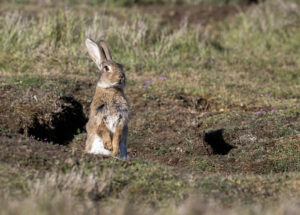
Red foxes mate in the winter and the pups are born 7-8 weeks later. Both parents take care of the kits and each go off hunting to bring back food for the young. Foxes raise their pups in a den which has been abandoned by another animal – in this case it was most likely a former rabbit den. Amazingly, there were rabbits in holes just a few feet from the foxes’ den! Talk about keeping your enemy close!
The cubs remain at the family den for about 5 weeks before going off on their own near the end of the summer.
The kits spend most of their time underground when the parents are not present though as the pups get older they will explore the surrounding areas more and more on their own. In my image above I captured the young fox out exploring his world while he waited for his parents to return.
Like foxes? Check out these posts for more images and fox tales…
Until next month….m
Nikon D5, Sigma 150-600 mm Contemporary (@480mm), 1/1000 sec, f/8, ISO 1250

